A Numerical Study of the Sealing and Interstage Pressure Drop Characteristics of a Four-Tooth Three-Stage Brush Combination Seal
Abstract
Featured Application
Abstract
1. Introduction
2. Numerical Calculation Model of Four-Tooth Three-Stage Brush Seal
2.1. Geometric Structure and Calculation Domain
2.2. Numerical Modeling
2.2.1. Fractal Geometry Porous Media Model
- (1)
- Theory of fractal geometry porous media model
- (2)
- Numerical modeling of multi-stage brush seals for fractal geometry porous media
2.2.2. Computational Model Set up
2.3. Mesh Generation
2.4. The Verification of the Accuracy of the Numerical Method
3. Analysis of Numerical Calculation Results
3.1. Sealing Mechanism and Pressure Drop Imbalance Characteristics of Four-Tooth Three-Stage Brush-Type Combined Seals
3.1.1. Seal Mechanism
3.1.2. Uneven Pressure Drop Characteristics
3.2. Seal Leakage Rate and Pressure Drop Distribution Change Rule Under Different Structural Parameters of Four-Tooth Three-Stage Brush-Type Combination Seal
3.2.1. Axial Distance
3.2.2. Thickness of Brush Bundle
3.2.3. Radial Clearance
3.2.4. Height of Backplane Behind Brush Bundle
3.2.5. Grate Tooth Radial Distance, Number of Teeth, and Angle of Inclined Teeth
3.3. Calculation Conclusions and Parameter Improvements
3.3.1. Calculation Conclusions
3.3.2. Parameter Improvements
4. Mechanism Analysis of Unevenness Characteristic of Interstage Pressure Drop of Multistage Brush Seals
- (1)
- Increasing the thickness of the brush bundle and decreasing the backplane height in the upstream stage amplifies dissipation and pressure drop in that stage;
- (2)
- Increasing the radial clearance and baffle height in the downstream stage reduces dissipation and pressure drop in that stage;
- (3)
- These adjustments collectively improve the pressure drop uniformity across stages in multistage brush seals, aligning with the optimization strategy proposed in Section 3.3.
5. Summary
- (1)
- In the four-tooth three-stage brush combined seal, the high-pressure fluid dissipation includes tooth cavity vortex dissipation, tooth-tip throttling dissipation, brush bundle viscous damping dissipation, and inertial damping dissipation, with the latter two being the primary dissipations.
- (2)
- For the prototype combined seal in different pressure ratio conditions, the first, second, and third stage of the brush bundle pressure drop percentage are about 18.3%, 33.0%, and 43.3%, the grate tooth are of the pressure drop percentage is 8.4%, and the pressure drop between the stages of the combination seal exhibits an obvious unevenness.
- (3)
- In combined seals, changes in the brush bundle axial distance and tooth inclination angle show no significant effect on leakage rate and inter-stage pressure drop distribution; the gradient setting of brush bundle thickness, as well as the number of teeth and the size of tooth tip clearance exhibit certain influences on pressure drop distribution; changes in the brush bundle radial clearance and backplane height exert the most visible effect on the adjustment of pressure drop imbalance; additionally, improvements in pressure drop equalization characteristics between brush bundles at different stages are often accompanied by an increase in seal leakage rate.
- (4)
- By cross-compensating the axial and radial dimensions of the brush bundle and setting the parameters of each stage in a non-gradient design, the goal of equalization the pressure drop between stages can be achieved at the cost of a small increase in leakage rate. The improved seal shows a 5.8% increase in leakage rate and a 23% reduction in maximum brush bundle pressure drop compared to the prototype.
- (5)
- In multi-stage brush seals, viscous damping dissipations and inertial damping dissipations of the brush bundle lead to an increase in the entropy value of the leakage gas, and the pressure drop increases nonlinearly by stages as the entropy value increases.
- (6)
- Compared to traditional methods, the leakage rate of the improved seal increased by only 5.8%, while the backplane height of the improved design (0.6 mm) remains greater than the typical radial clearance of labyrinth seals (0.3 mm), ensuring the practical feasibility of the modified design in engineering applications. This indicates that reducing the height of the first-stage backplane to enhance the inter-stage pressure drop characteristics of multistage brush seals holds significant engineering value.
Author Contributions
Funding
Institutional Review Board Statement
Informed Consent Statement
Data Availability Statement
Conflicts of Interest
Appendix A. Detailed Derivation of Fractal Geometry Models for Porous Media
- (1)
- Fractal Geometry Theory
- (2)
- Theory of fractal geometry porous media
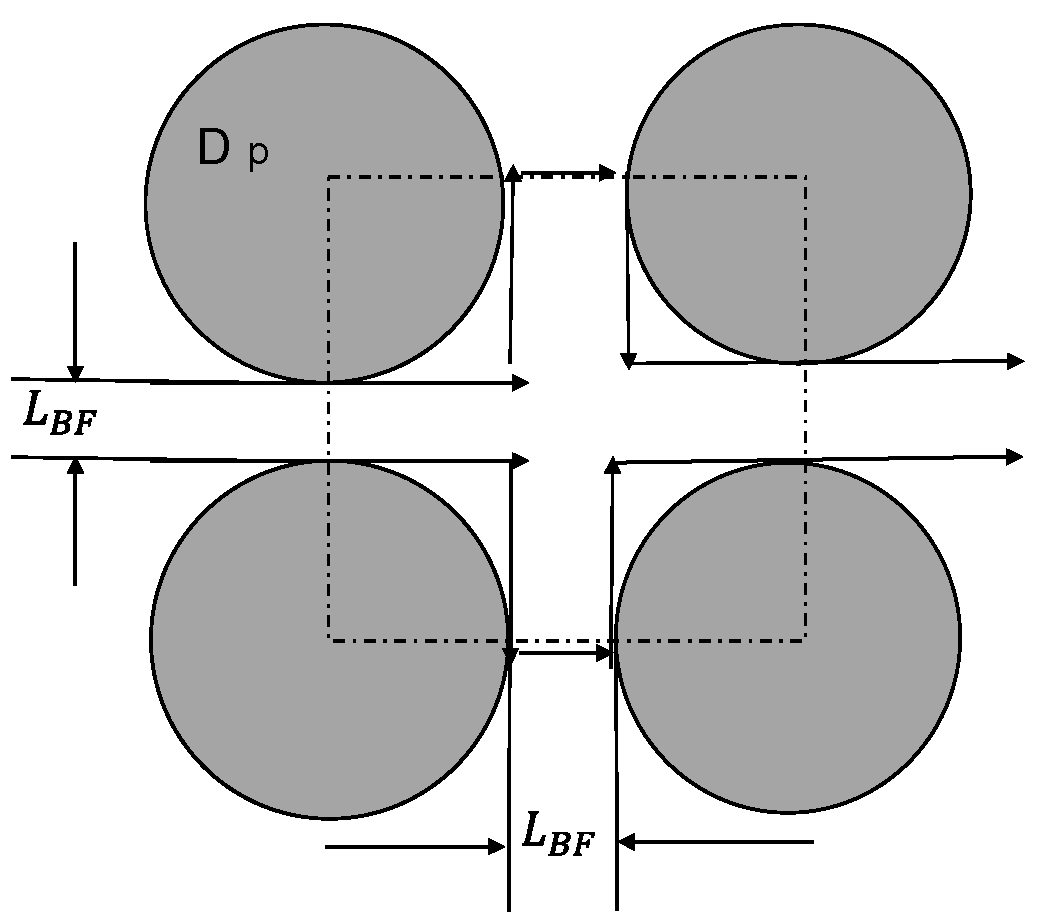
References
- Li, J.; Li, Z.; Zhang, Y. Research progress of brush seal technology. Aeroengine 2019, 45, 74–84. [Google Scholar]
- Chupp, R.E.; Ghasripoor, F.; Turnquist, N.A.; Demiroglu, M.; Aksit, M.F. Advanced seals for industrial turbine applications: Dynamics seal development. J. Propuls. Power 2002, 18, 1260–1266. [Google Scholar] [CrossRef]
- Dinc, S.; Demiroglu, M.; Turnquist, N.; Mortzheim, J.; Goetze, G.; Maupin, J.; Hopkins, J.; Wolfe, C.; Florin, M. Fundamental design issues of brush seals for industrial applications. ASME J. Turbomach. 2002, 124, 293–300. [Google Scholar] [CrossRef]
- Bayley, F.J.; Long, C.A. A combined experimental and theoretical study of flow and pressure distributions in a brush seal. ASME J. Eng. Gas Turbines Power 1993, 115, 404–410. [Google Scholar] [CrossRef]
- Turner, M.T.; Chew, J.W.; Long, C.A. Experimental investigation and mathematical modeling of clearance brush seals. ASME J. Eng. Gas Turbines Power 1998, 120, 573–579. [Google Scholar]
- Sun, X.; Li, W.; Liu, X. Design and test of brush seal. Aeroengine 2005, 31, 17–19. (In Chinese) [Google Scholar]
- Zhao, H.; Jiao, Z.Z.; Sun, D.; Liu, Y.; Zhan, P.; Xin, Q. Numerical and experimental research on interstage pressure drop distribution affecting factors of multi-stage brush seals. Acta Aeronaut. Astronaut. Sin. 2020, 41, 123544. (In Chinese) [Google Scholar]
- Pugachev, A.O.; Deckner, M. Experimental and theoretical rotordynamic stiffness coefficients for a three-stage brush seal. Mech. Syst. Signal Process. 2012, 31, 143–145. [Google Scholar] [CrossRef]
- Wang, K.; Yang, Y.; Suo, S.; Jiang, J. Research on flow calculation and configuration of system parameters of two-stage brush seal. Lubr. Seal. 2017, 42, 43–47. [Google Scholar]
- Wen, L.; Wang, Z.L.; Ding, L.; Liu, J.; Hu, G.; Chen, C. Inter-stage imbalance analysis of tow-stage low hysteresis brush seal. J. Beijing Univ. Aeronaut. 2014, 40, 1154–1159. (In Chinese) [Google Scholar]
- Qiu, B.; Li, J.; Feng, Z.; Jiang, S.; Kong, X. Experimental and numerical study of leakage characteristics of two-stage brush seals. J. Xi’an Jiaotong Univ. 2013, 47, 7–12. [Google Scholar]
- Raben, M.; Friedrichs, J.; Helmis, T.; Flegler, J. Brush seals used in steam environments-chronological wear development and the impact of different seal designs. J. Eng. Gas Turbines Power 2016, 139, 051901. [Google Scholar]
- Li, G.; Sun, D.; Jiao, Z.; Du, C.; Bai, L. Numerical study on the flow heat transfer characteristics of multi-stage low hysteresis type brush seals. Fan Technol. 2019, 61, 56–63. [Google Scholar]
- Zhang, G.; Sun, D.; Jiao, Z.; Du, C.; Bai, L. Numerical and experimental study on the flow heat transfer characteristics of two-stage brush seals. Fan Technol. 2020, 62, 44–52. [Google Scholar]
- Jiao, Z. Numerical and Experimental Study on the Equilibrium Characteristics of Critical Bearing Pressure and Interstage Pressure Drop of Brush Seal. Master’s Thesis, Shenyang University of Aeronautics and Astronautics, Shenyang, China, 2020. [Google Scholar]
- Yan, S.; Hu, F.; Huang, S.Q.; Liu, S.W. Leakage and inter-stage imbalance analysis of two-stage brush seals structure based on CFD and neural network! Aerengine 2022, 48, 70–75. [Google Scholar]
- Li, Y.; Zhao, H.; Sun, D.; Mu, W.; Ma, T.; Hu, G. Numerical and experimental study on the heat transfer characteristics of multi-stage brush seal interstage flow. J. Aerosp. Dyn. 2024, 39, 20220308. [Google Scholar]
- Zhao, H.; Li, Y.; Sun, D.; Mu, W.; Ma, T.; Hu, G. Numerical and experimental study of pressure drop equalization between differentiated multistage brush seal stages. J. Aerosp. Dyn. 2022, 37, 934–945. [Google Scholar]
- Li, G.-H. Experimental and Numerical Study of Multistage Brush Seal Based on Pressure Drop Matching. Masters’ Thesis, Inner Mongolia University of Technology, Hohhot, China, 2024. [Google Scholar]
- Pan, J.; Zhang, J.; Sun, D.; Zhou, K.; Ma, L. Numerical and experimental study on leakage and pressure drop distribution characteristics of two-stage brush seals. Lubr. Seal. 2025. Available online: https://link.cnki.net/urlid/44.1260.th.20250210.1039.006 (accessed on 27 January 2025).
- Zhang, Y.; Wang, Y.; Yan, X.; Li, J. Study of brush seal leakage flow and heat transfer characteristics Part I: Leakage characteristics. J. Eng. Thermophys. 2017, 38, 482–489. [Google Scholar]
- Yu, B.M. Progress in fractal analysis of transport properties in porous media. Adv. Mech. 2003, 33, 333–346. [Google Scholar]
- Yu, B.M. Analysis of heat and mass transfer in fractal media (review). J. Eng. Thermophys. 2003, 24, 481–483. [Google Scholar]
- Mandelbrot, B.B. The Fractal Geometry of Nature. San Fr. Freeman Am. J. Phys. 1983, 51, 286. [Google Scholar] [CrossRef]
- Zou, M. Some Applications of Fractal Theory. Ph.D. Thesis, Huazhong University of Science and Technology, Wuhan, China, 2007. [Google Scholar]
- Wechsatal, W.; Lorente, S.; Bejan, A. Optimal tree-shaped networks for fluid flow in a disc-shaped body. Int. J. Heat Mass Transf. 2002, 45, 4911–4924. [Google Scholar]
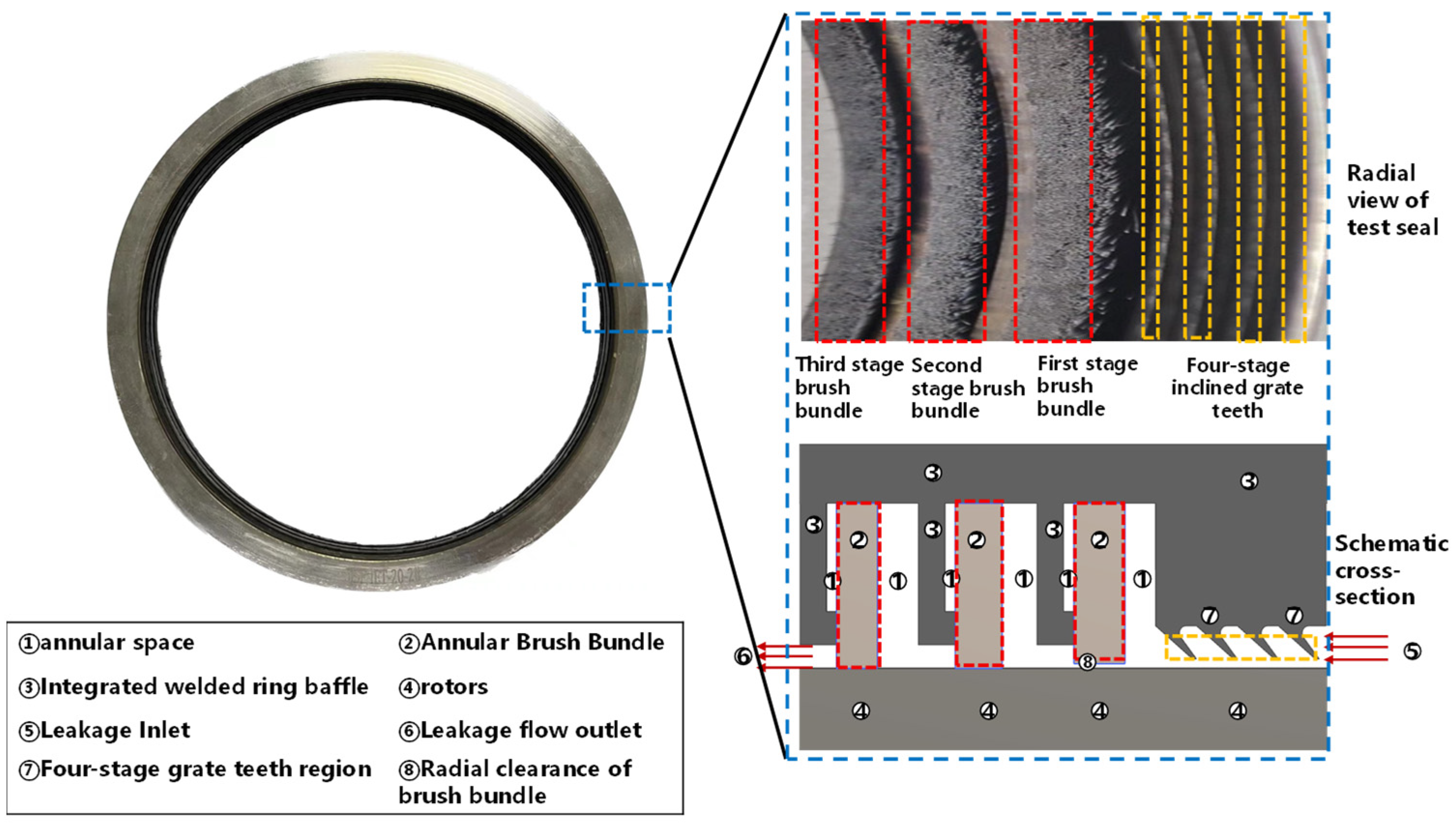
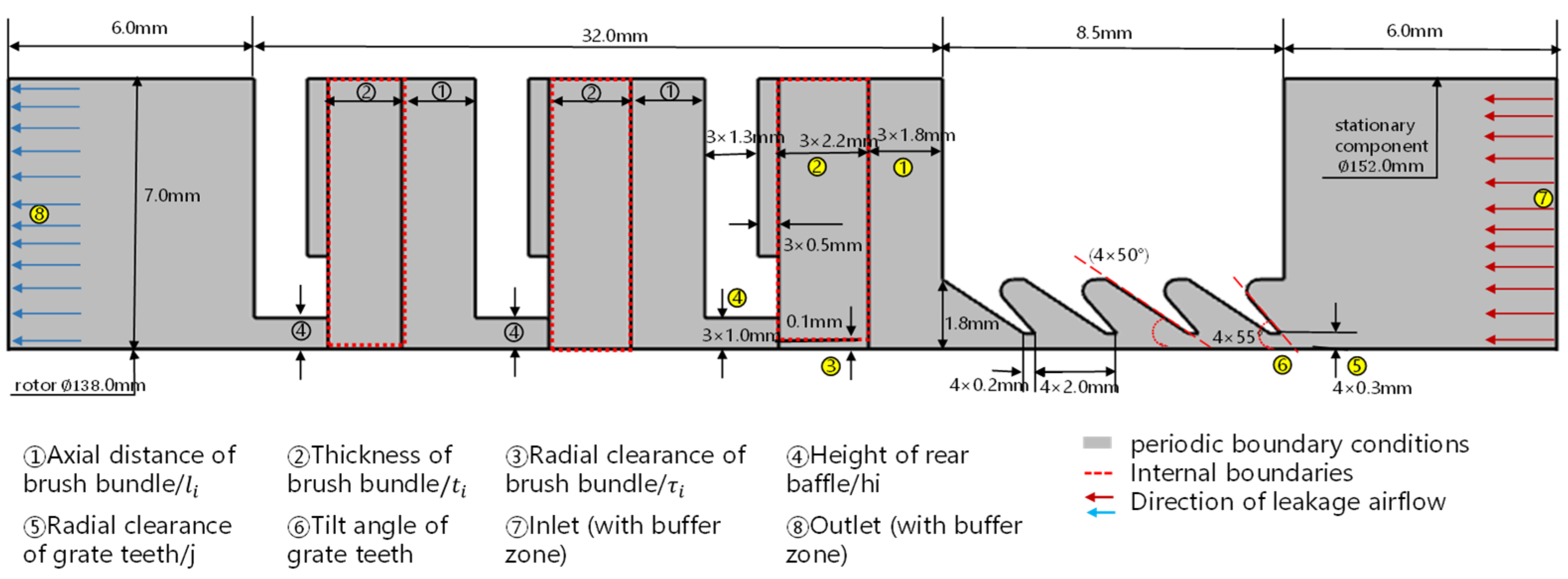

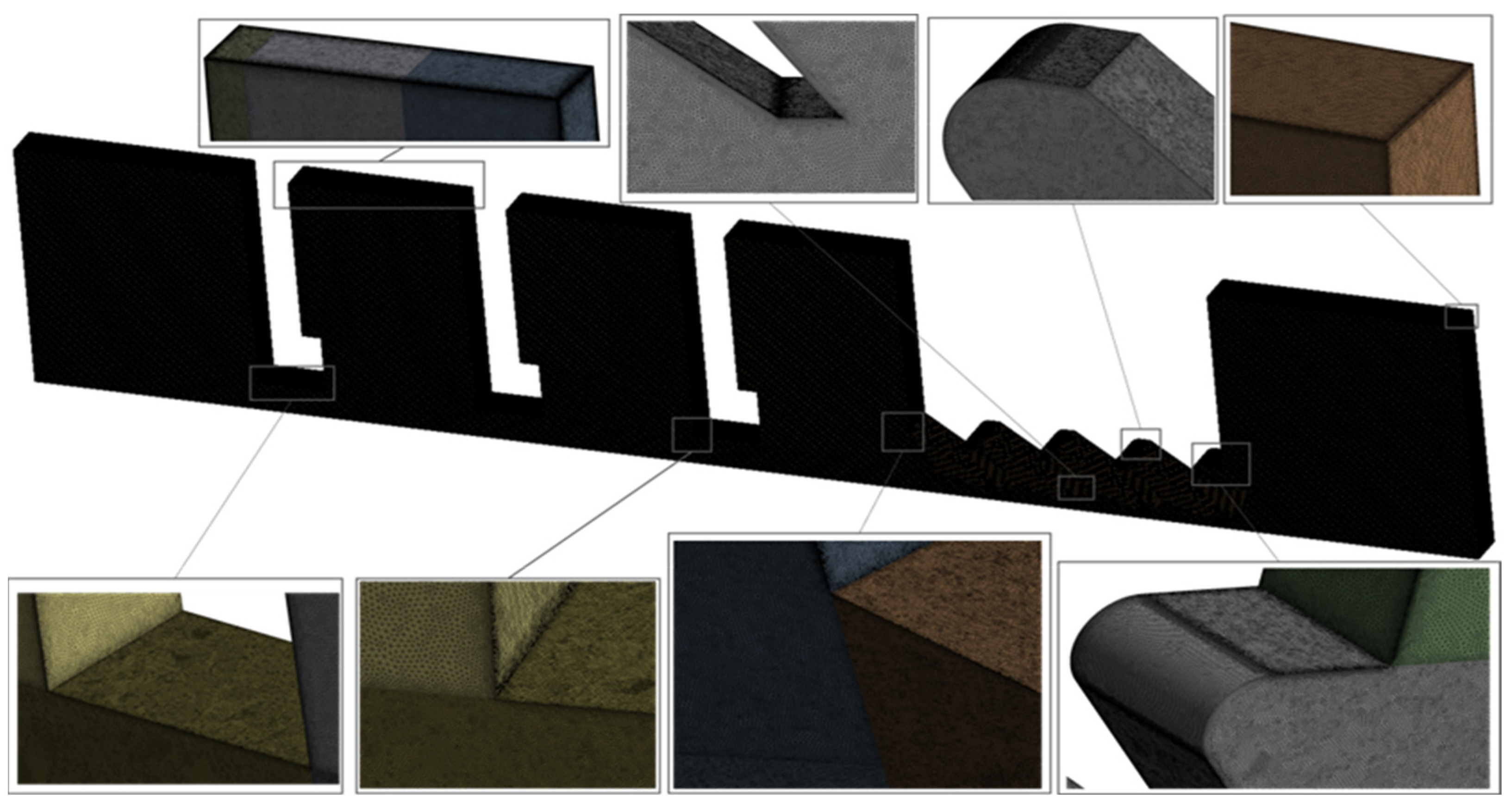

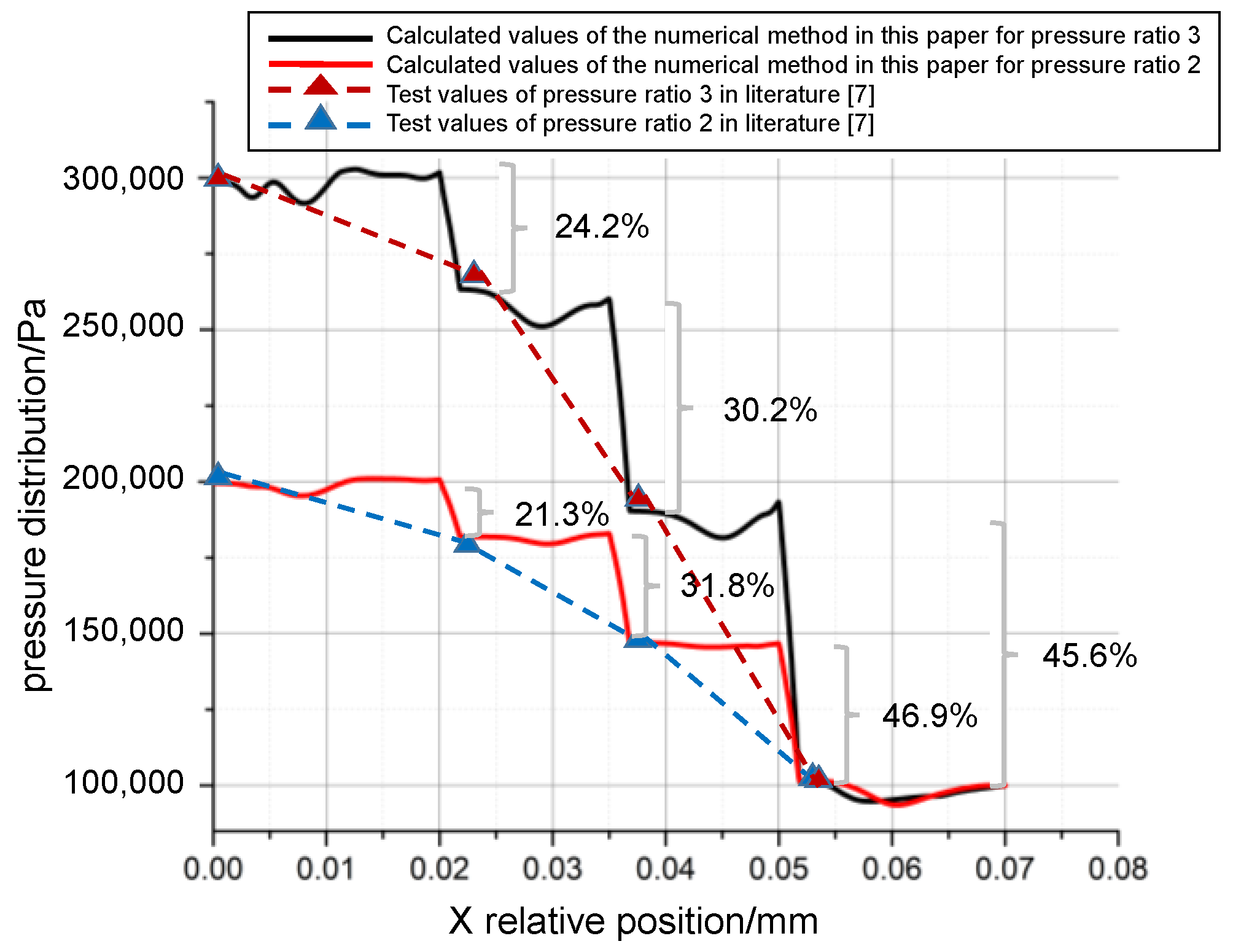
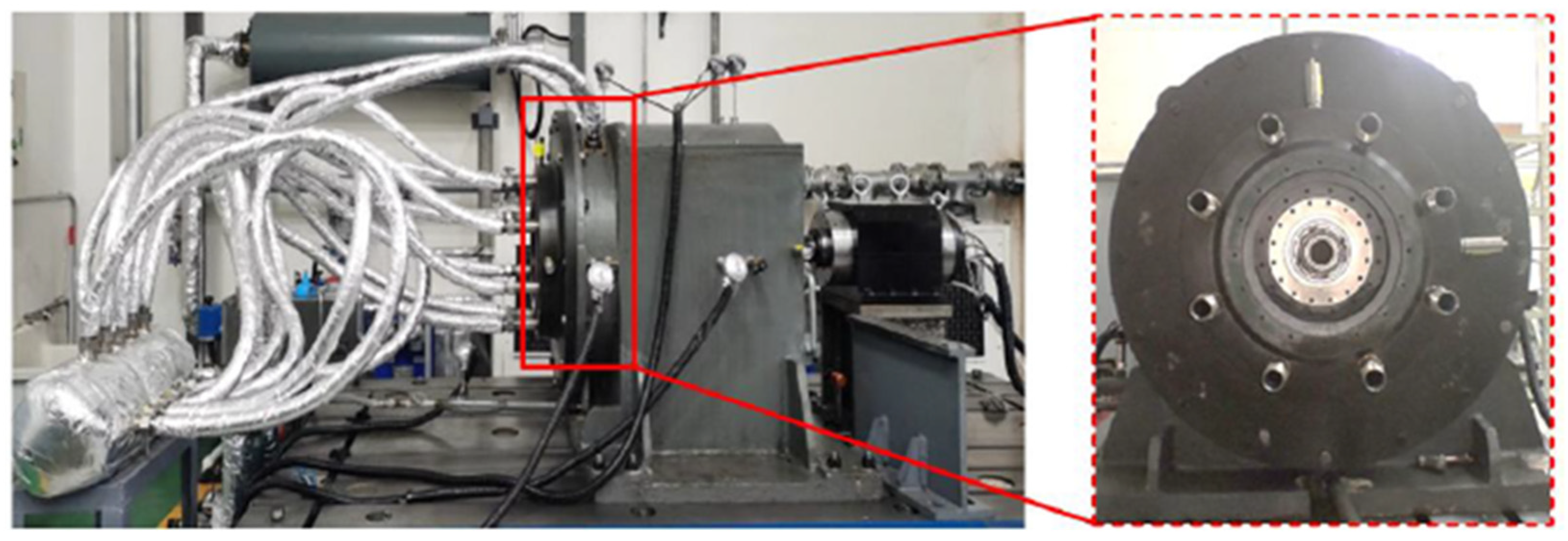
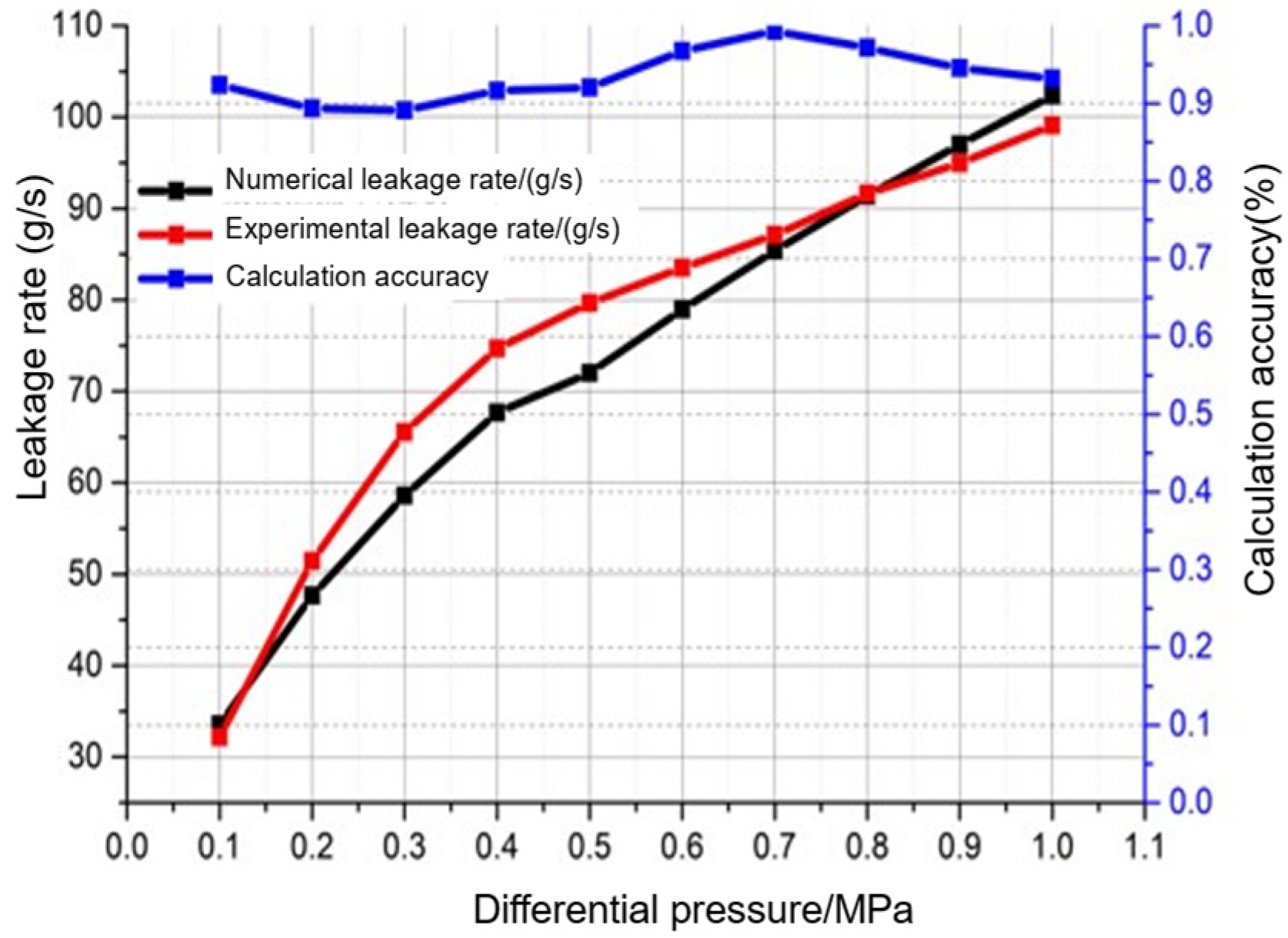



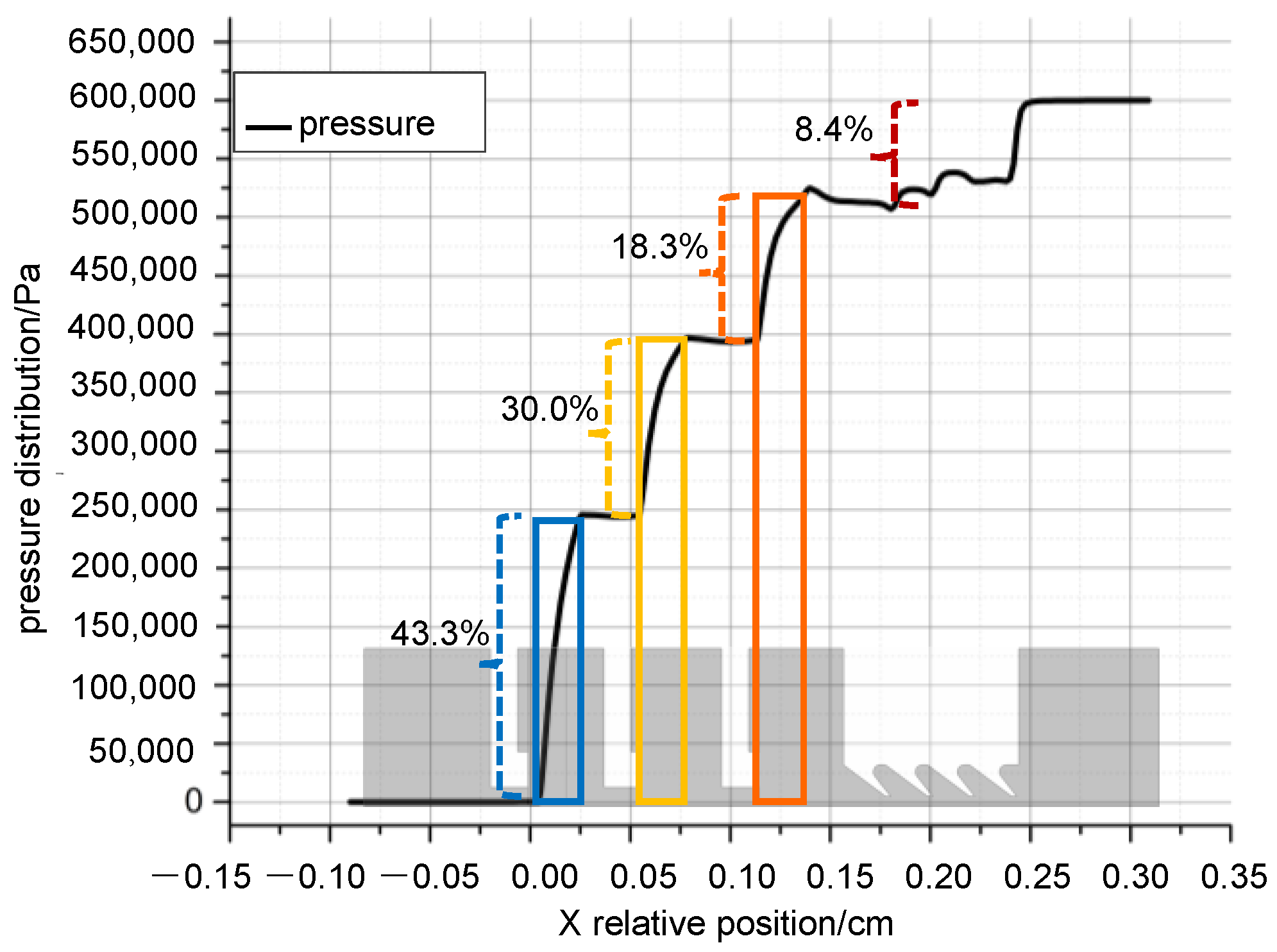
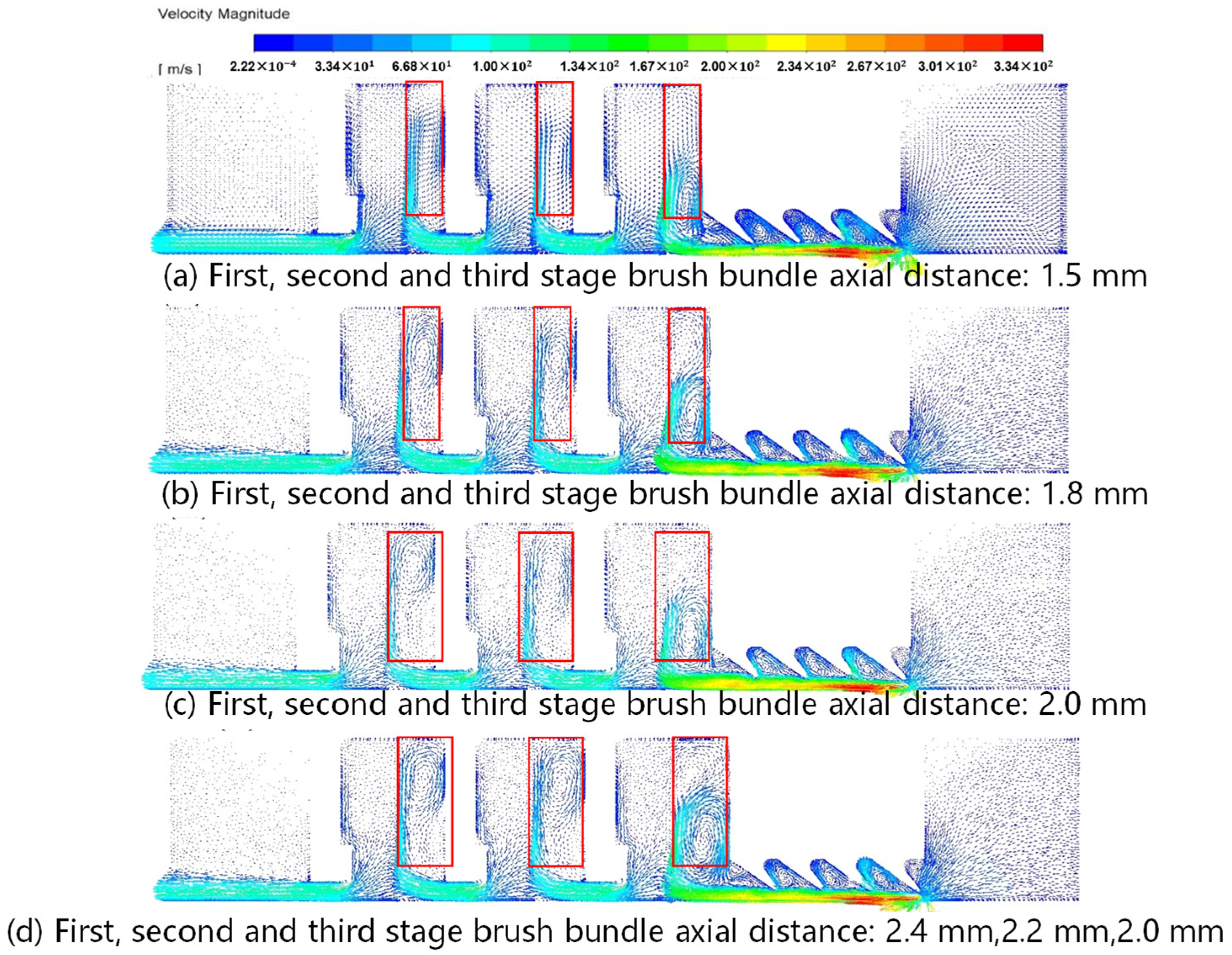
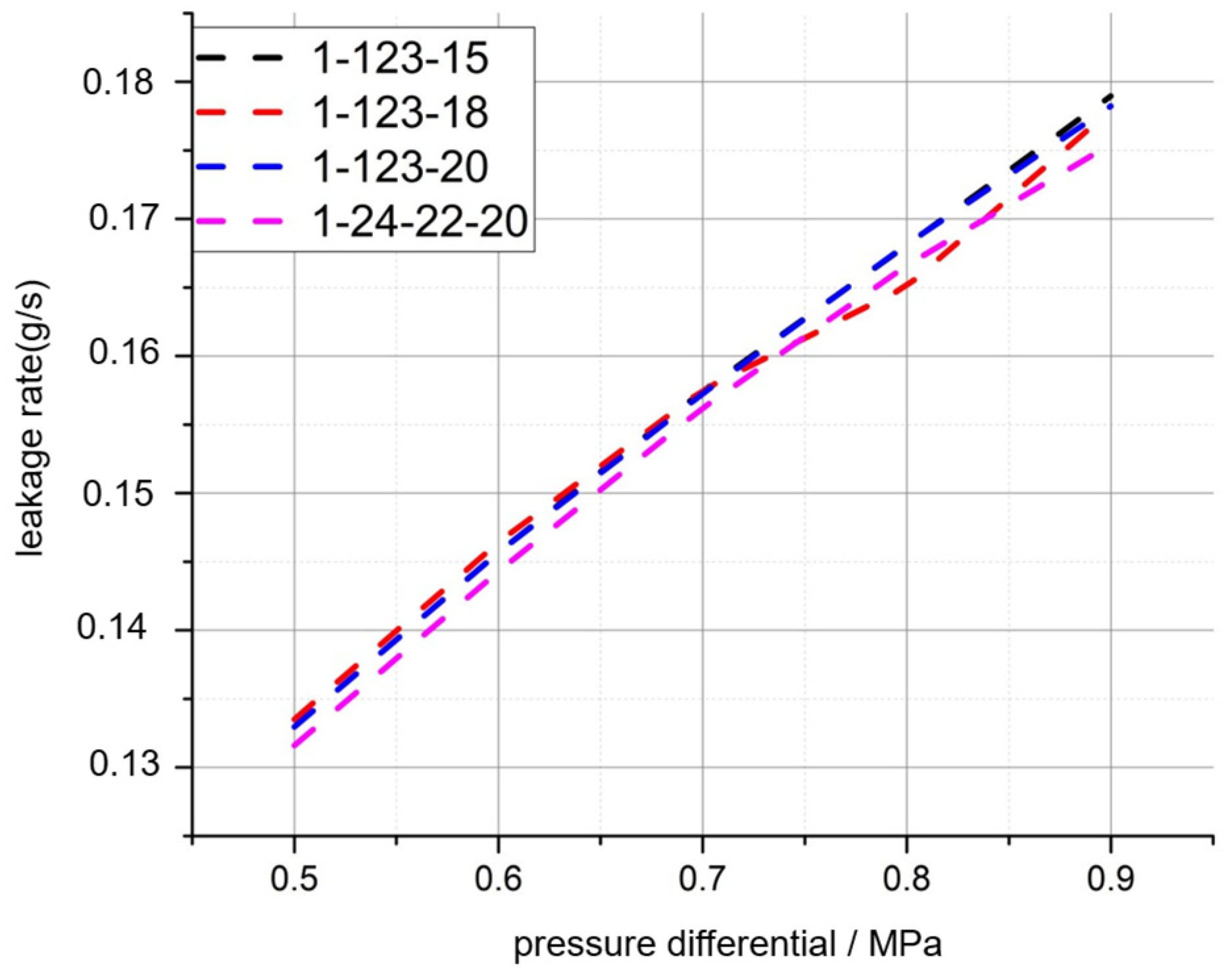
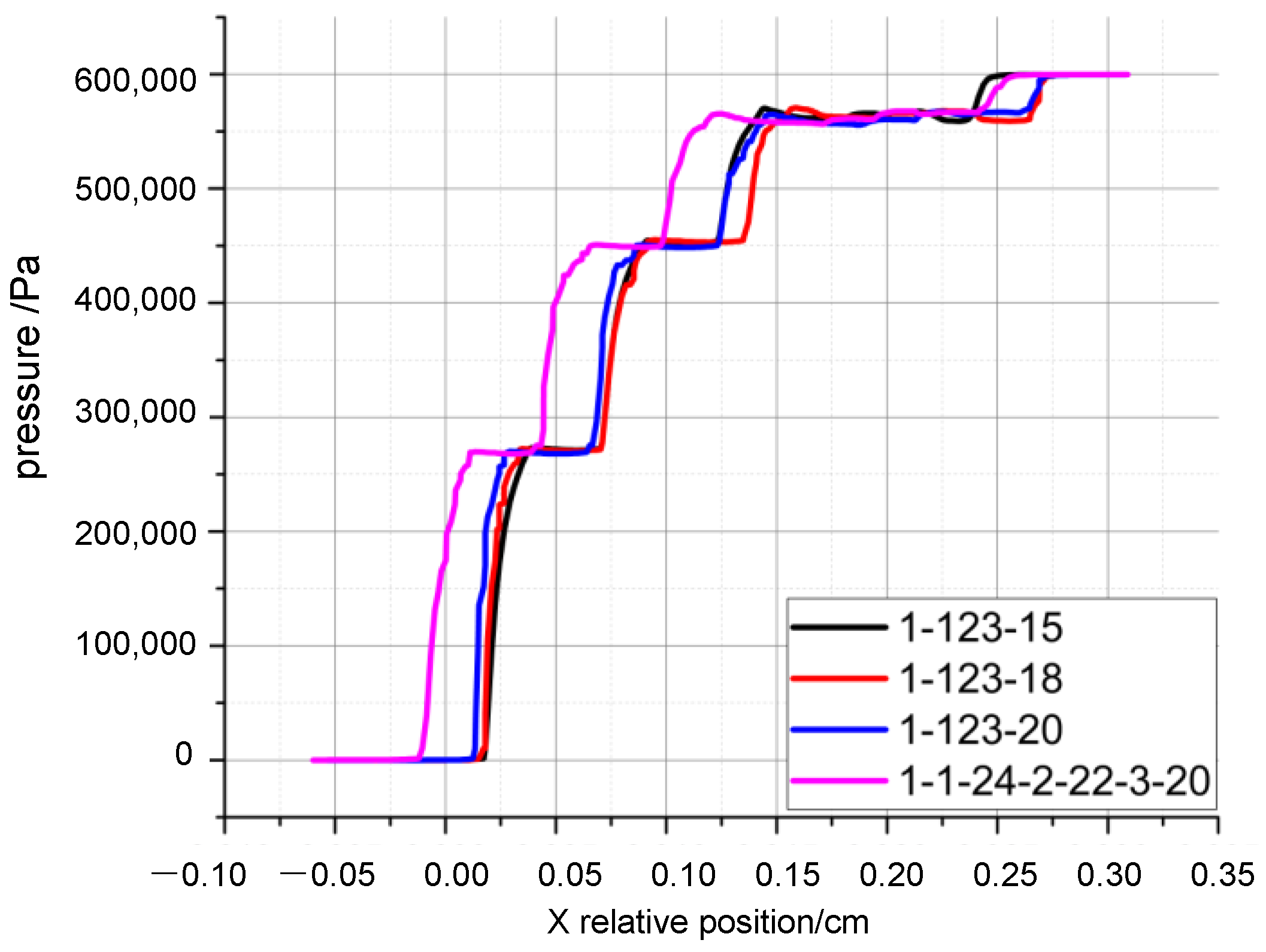
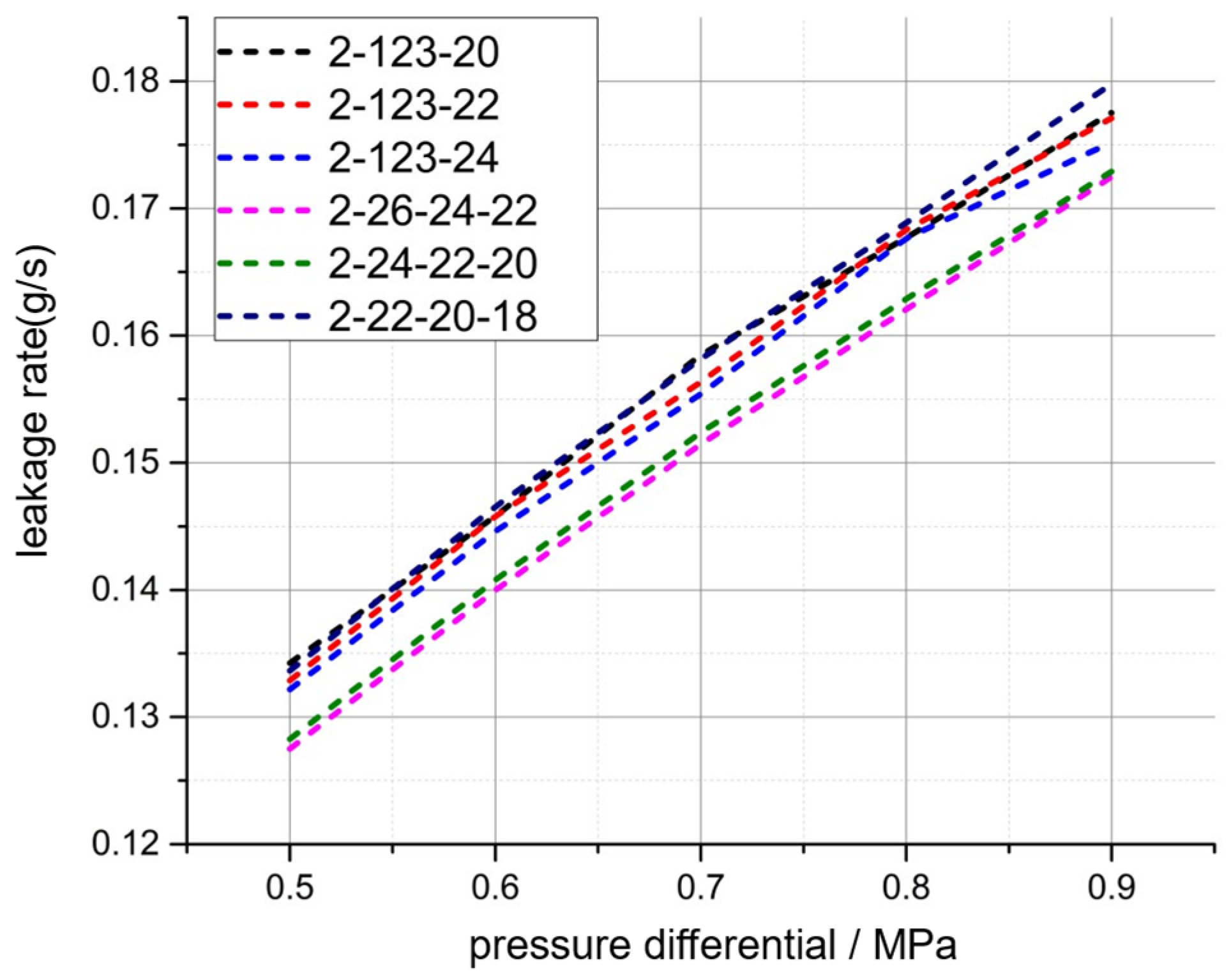
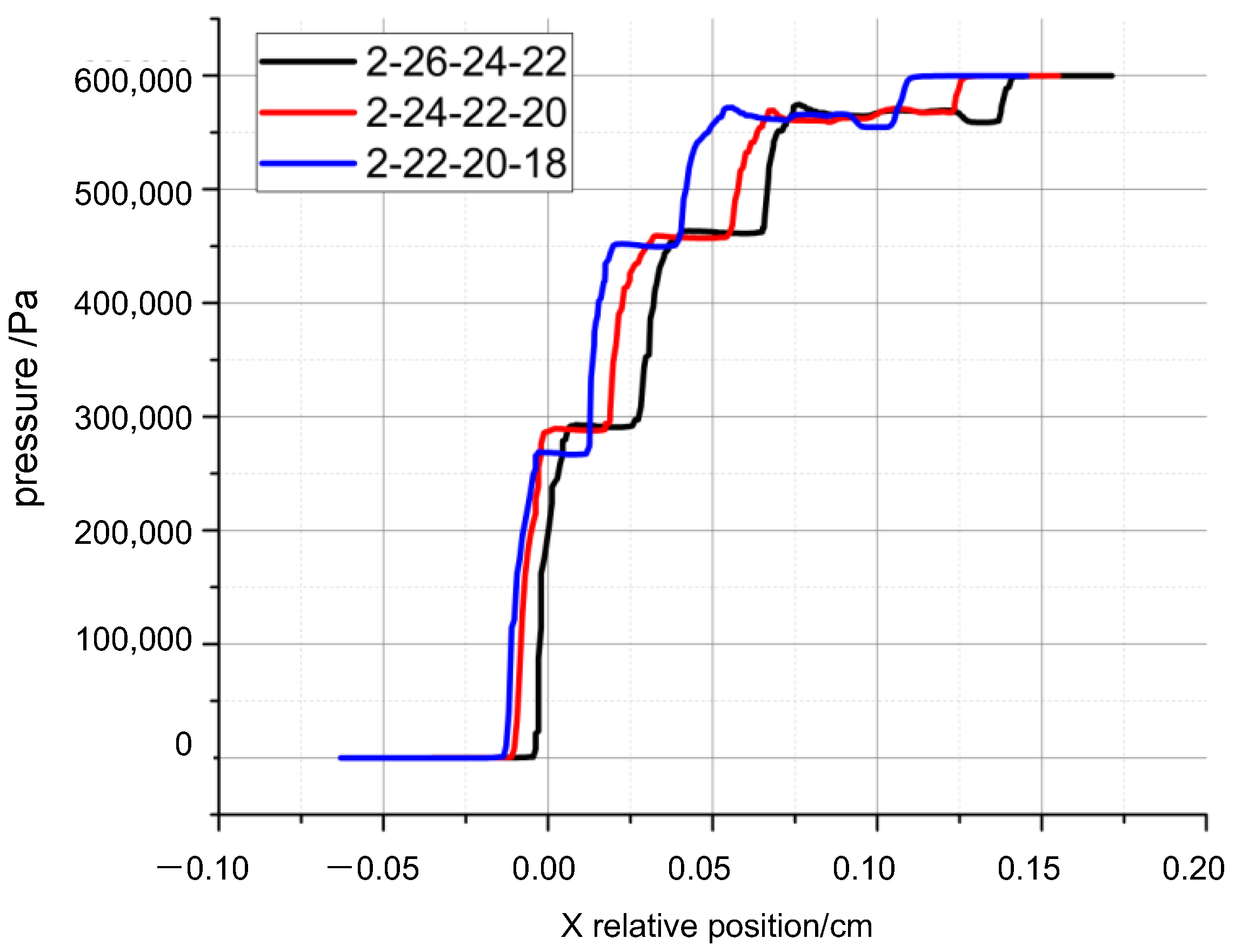
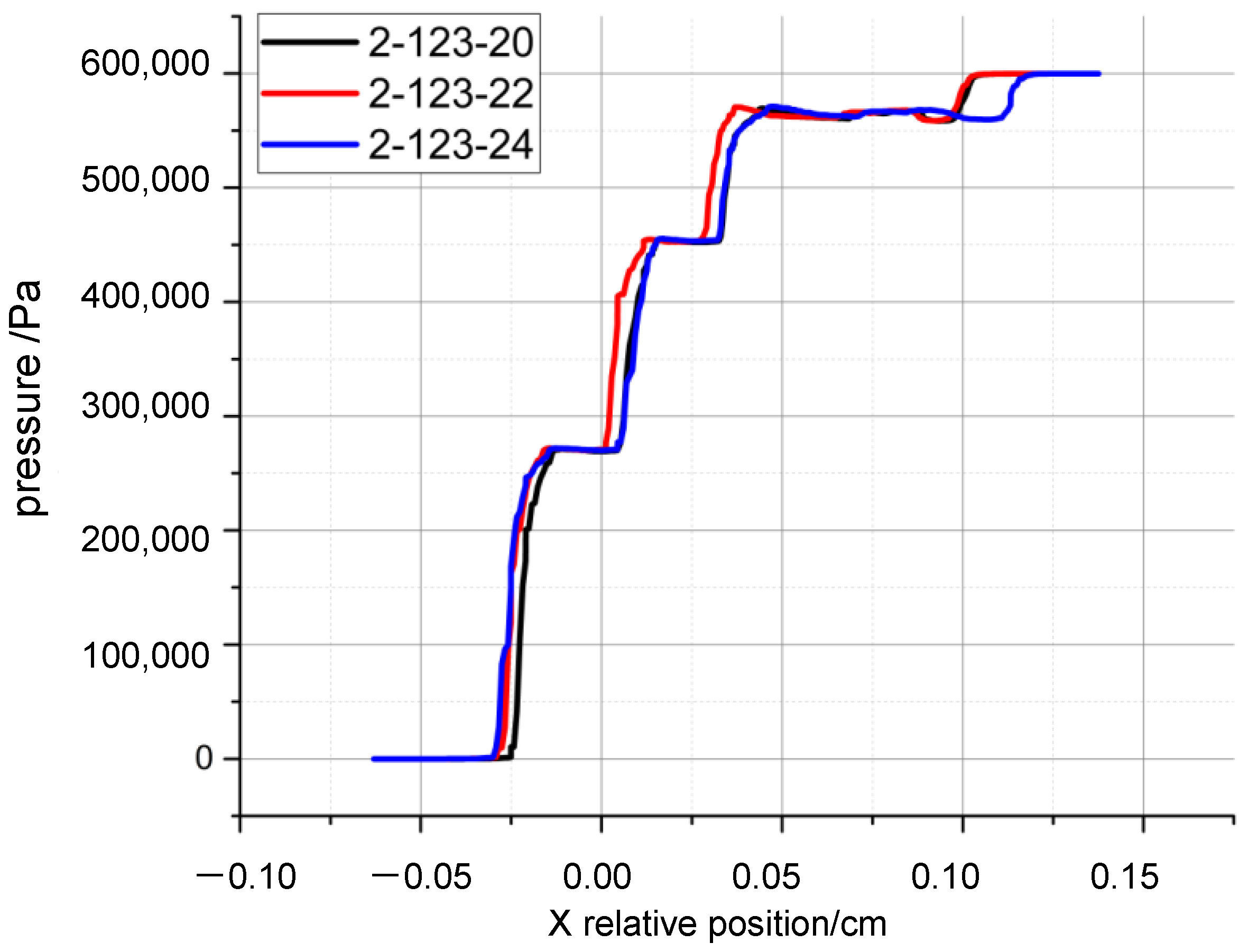
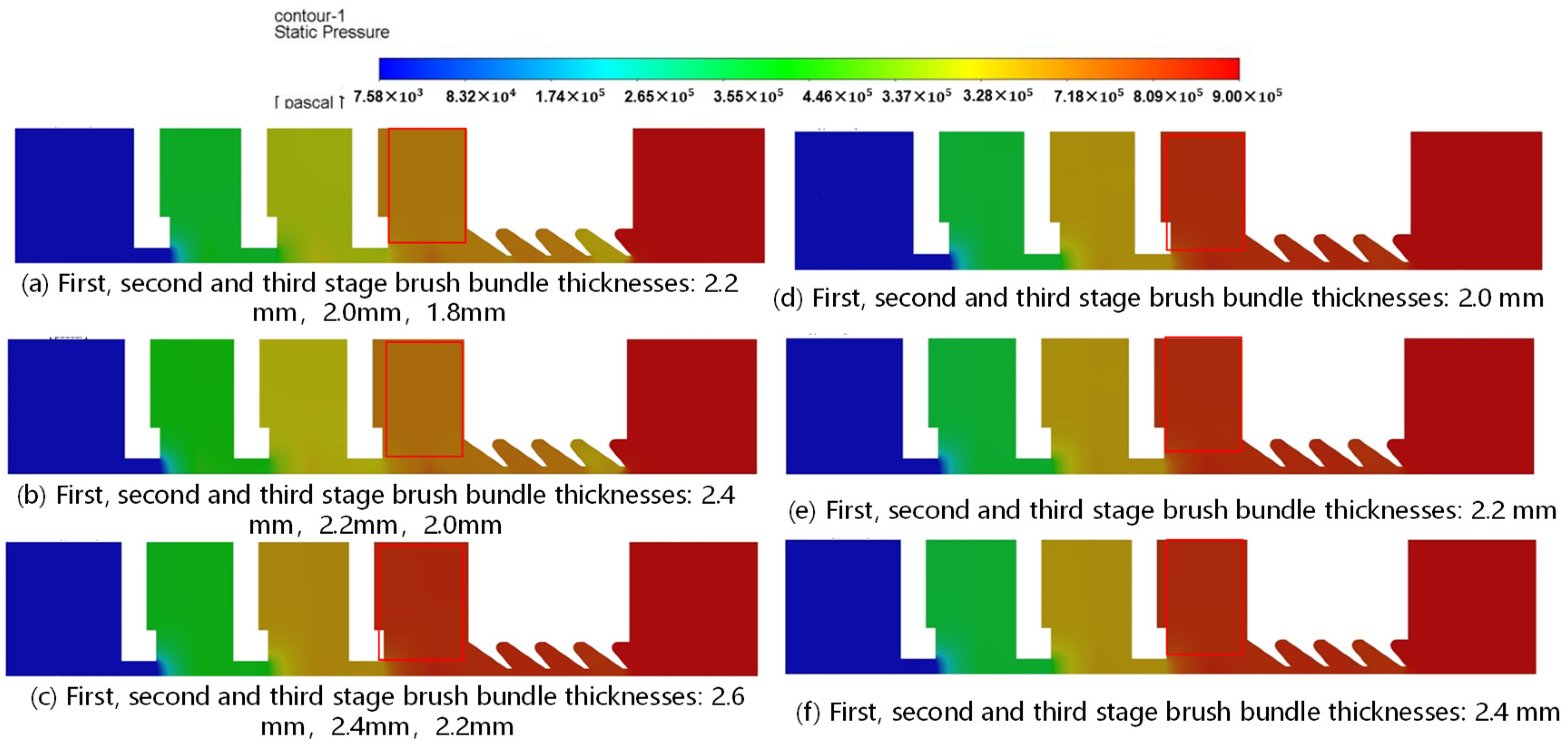
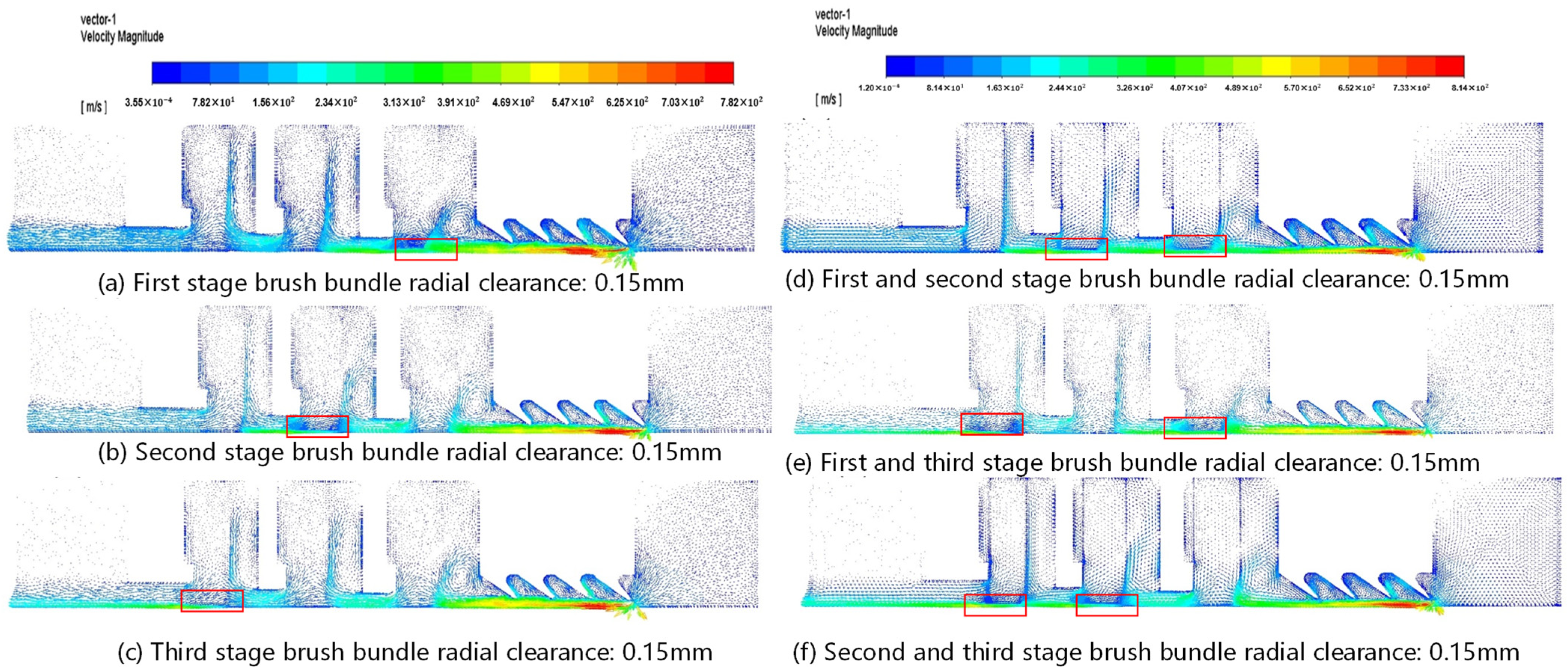
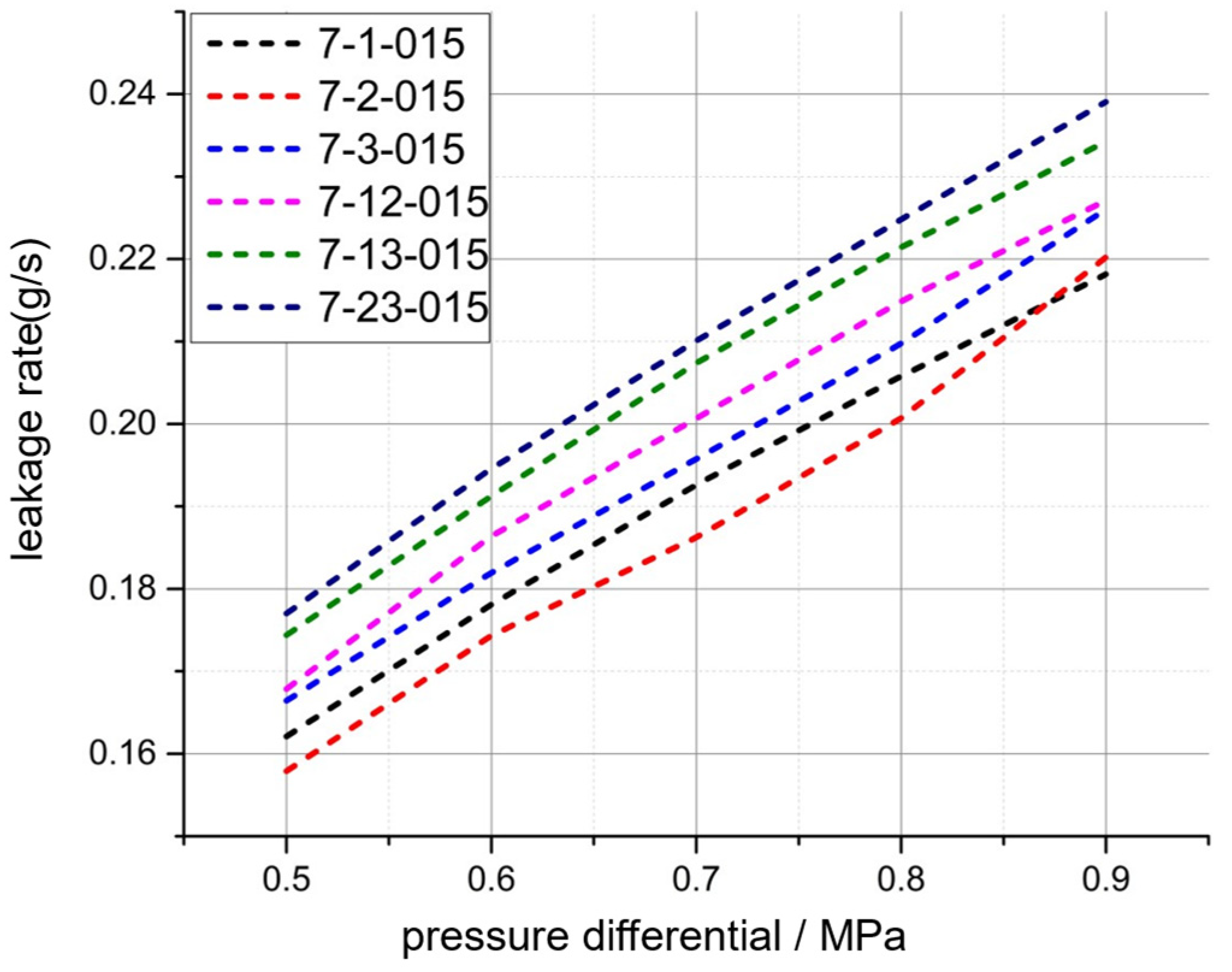
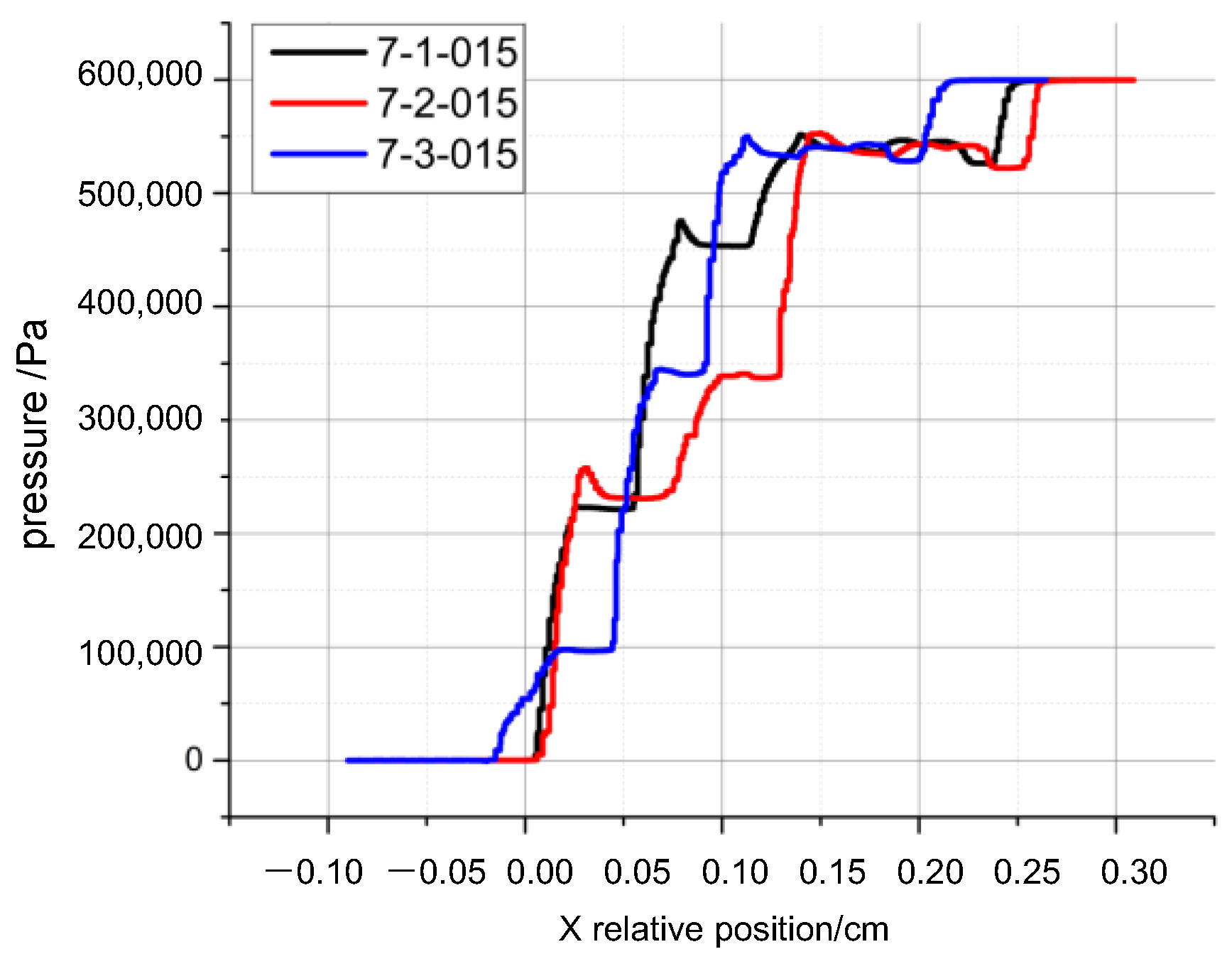
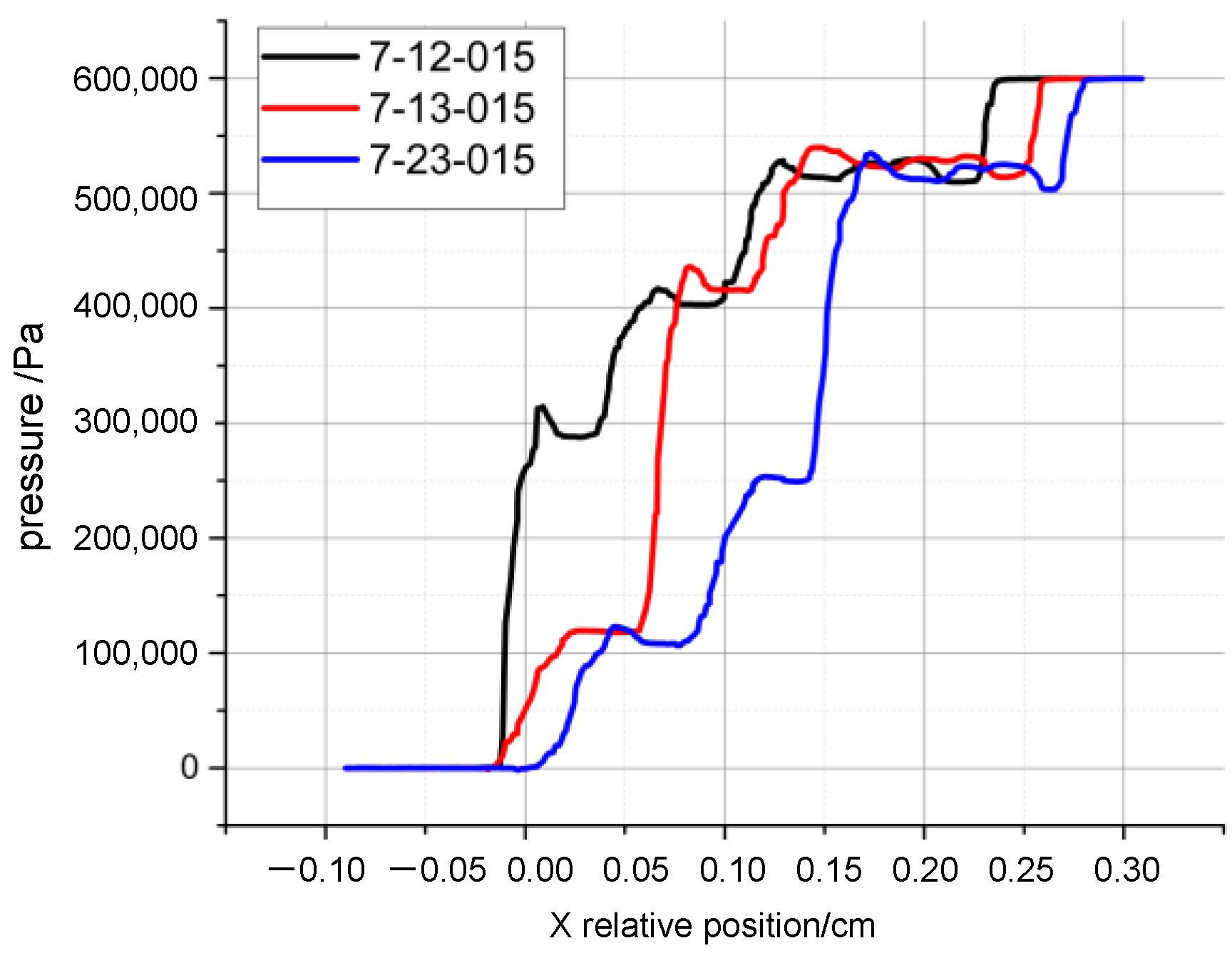
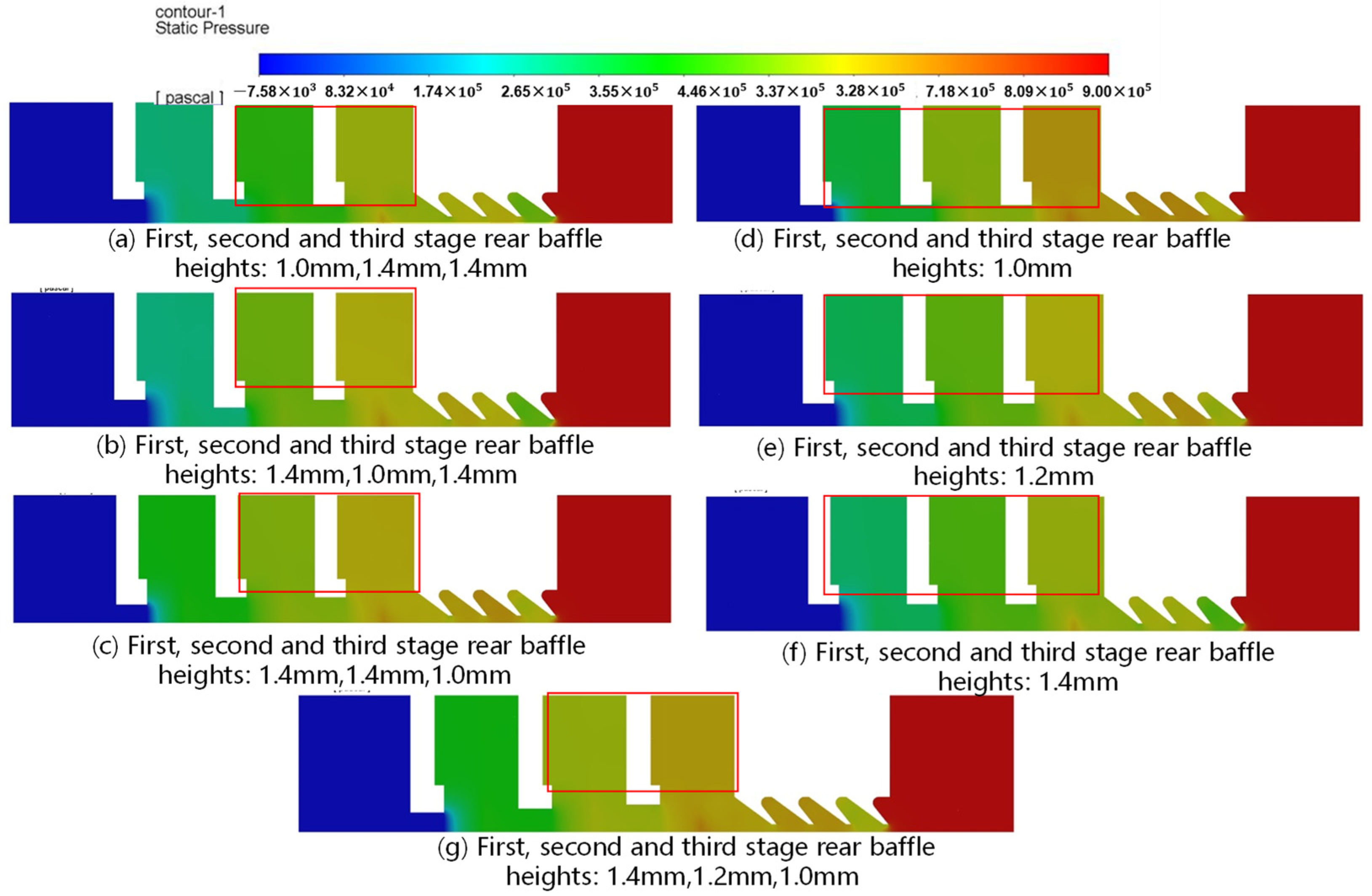
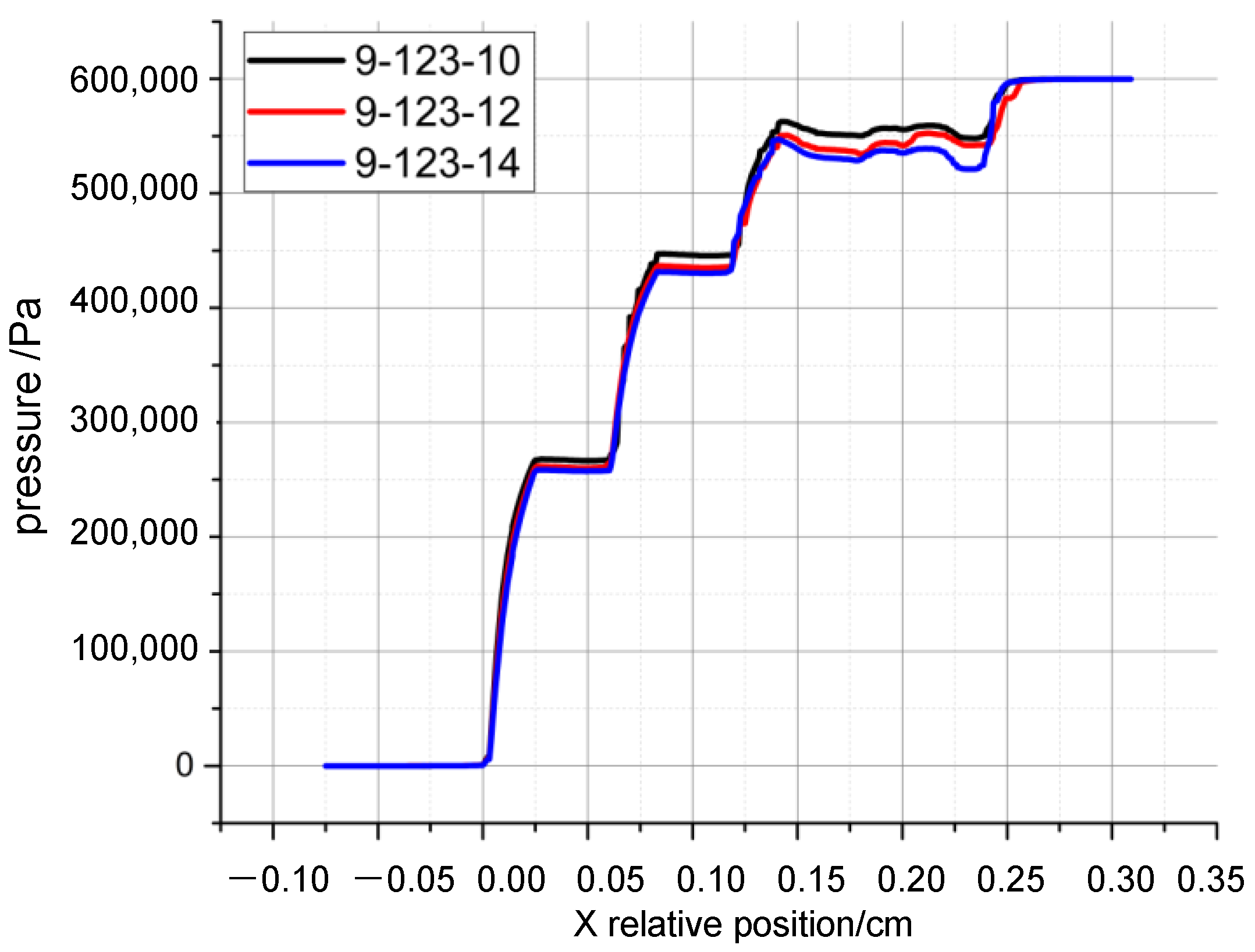

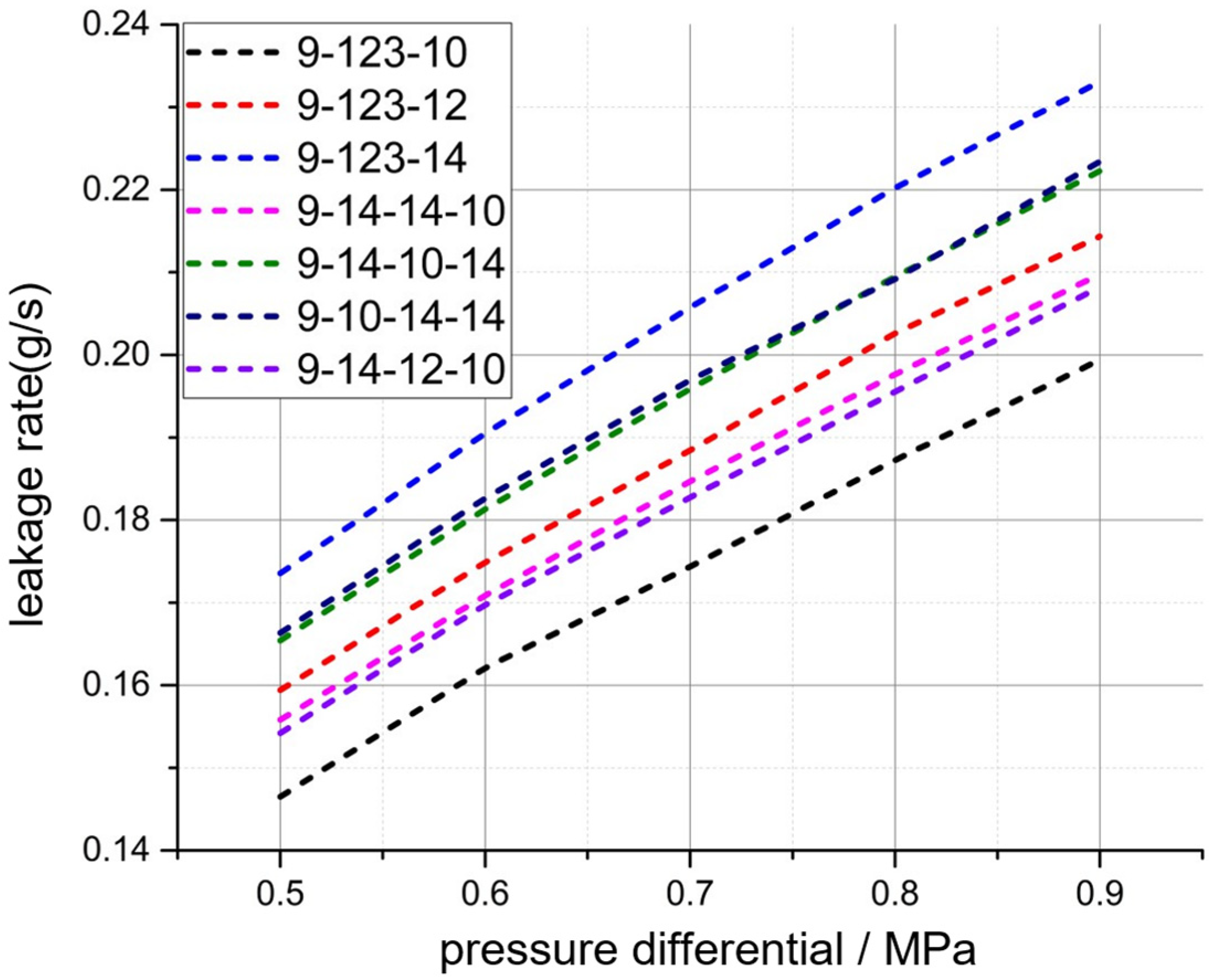
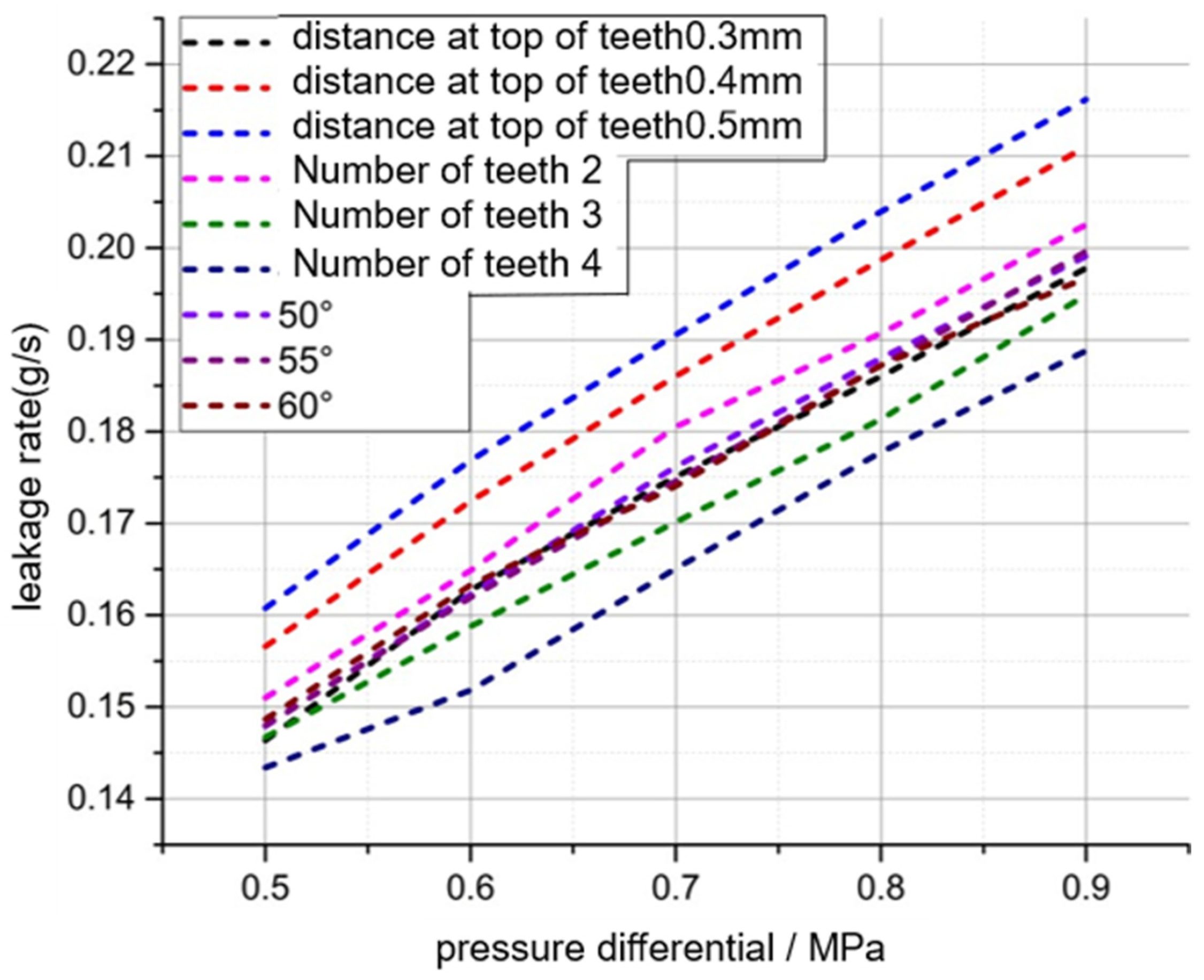
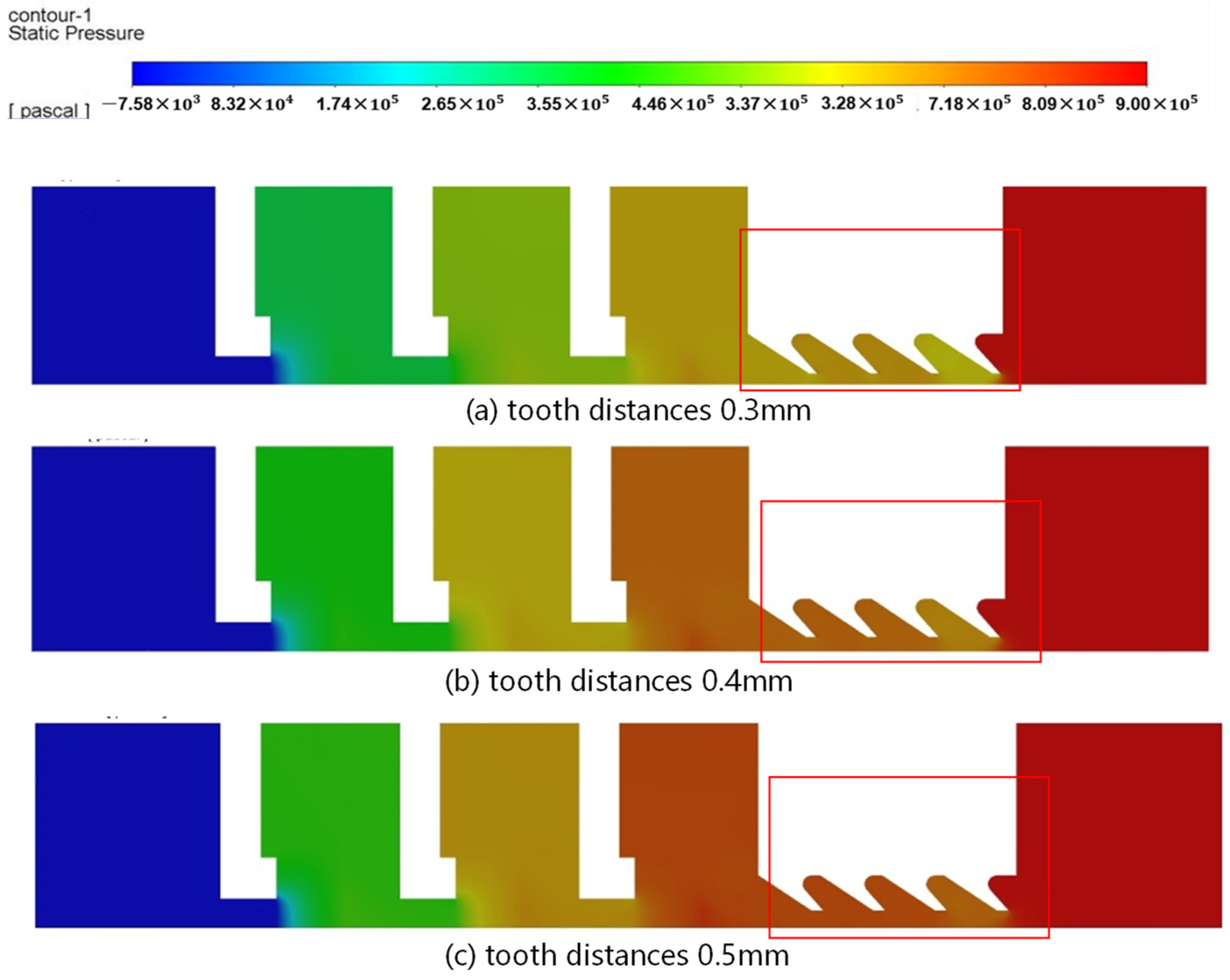

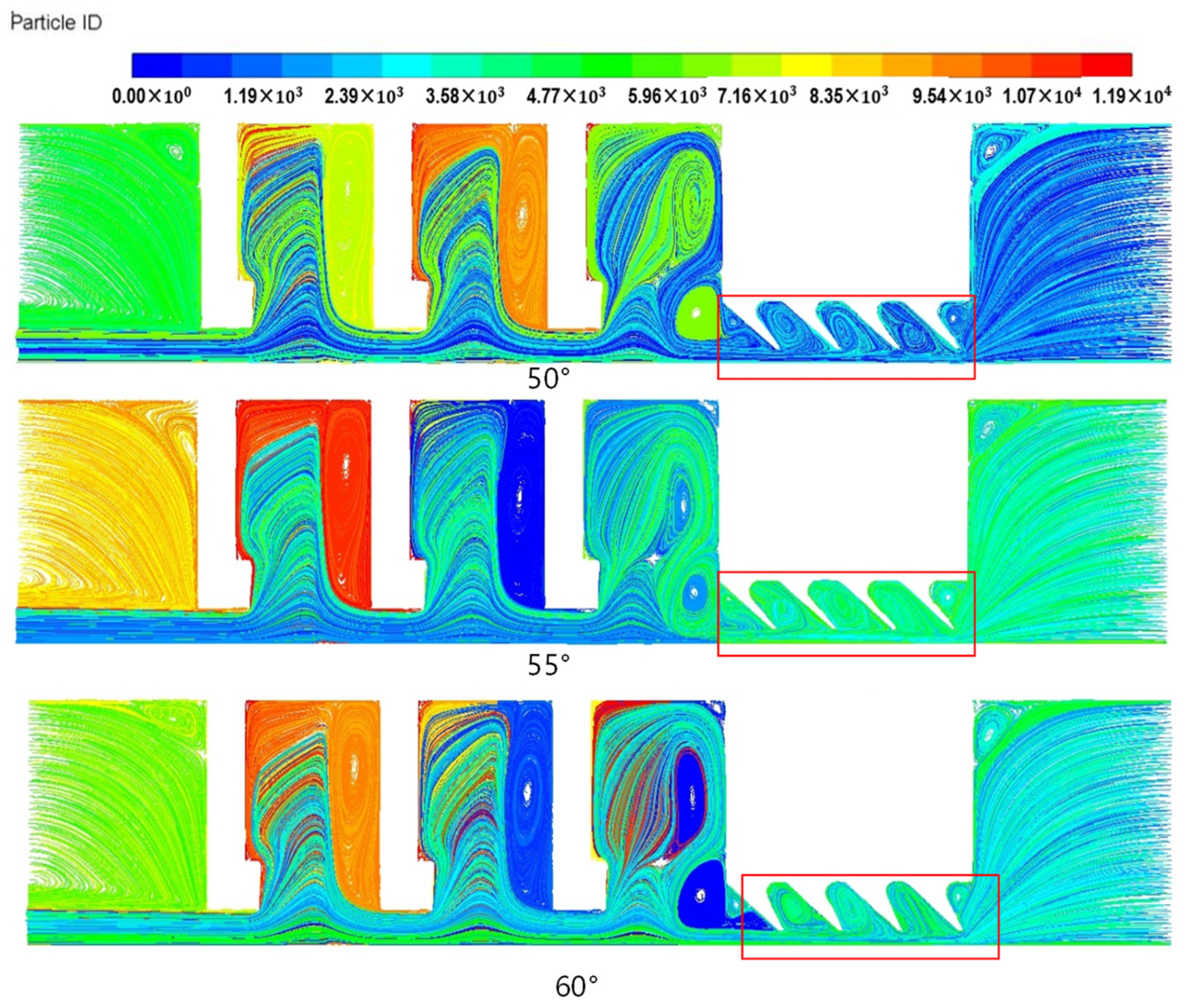
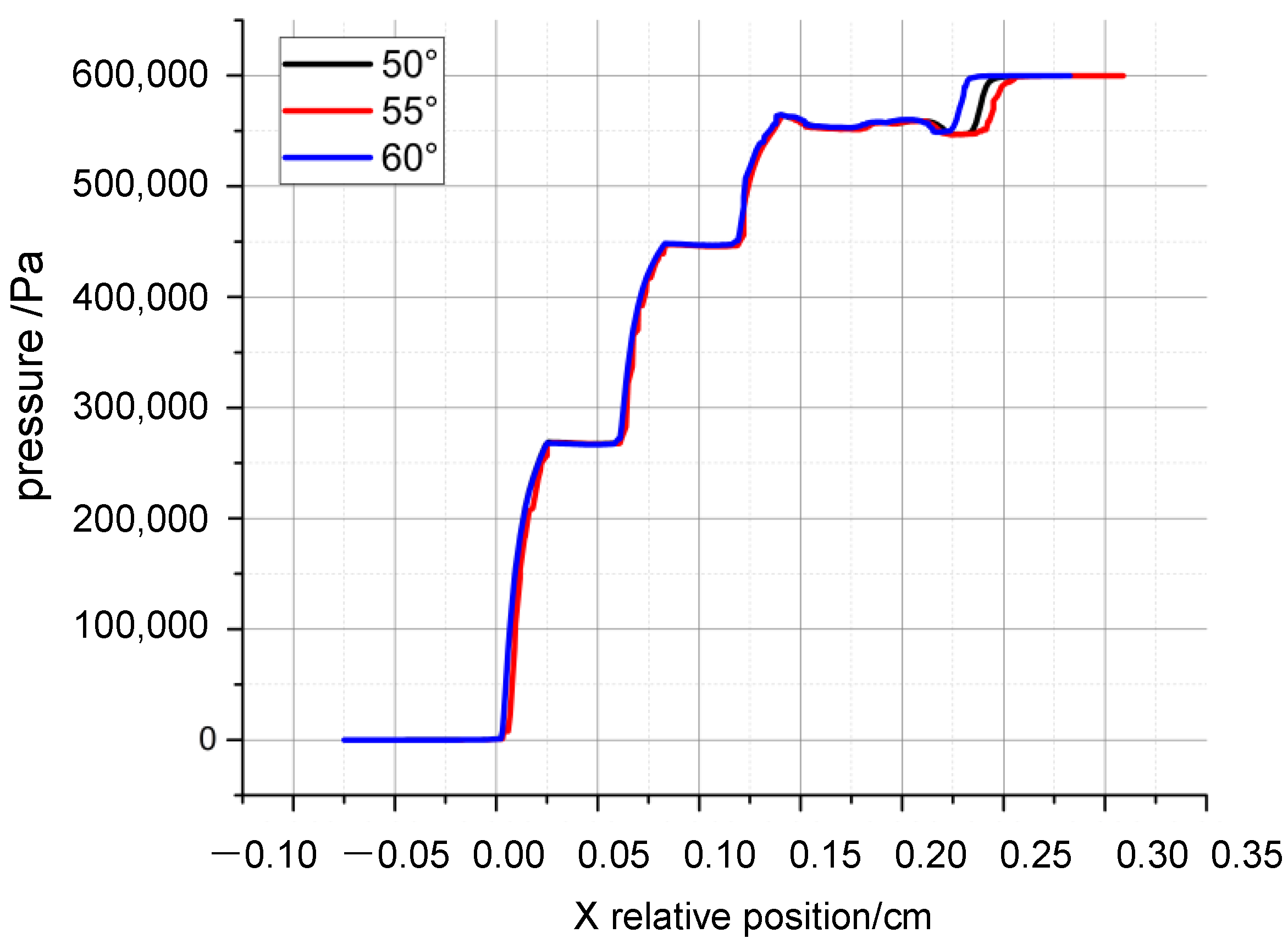
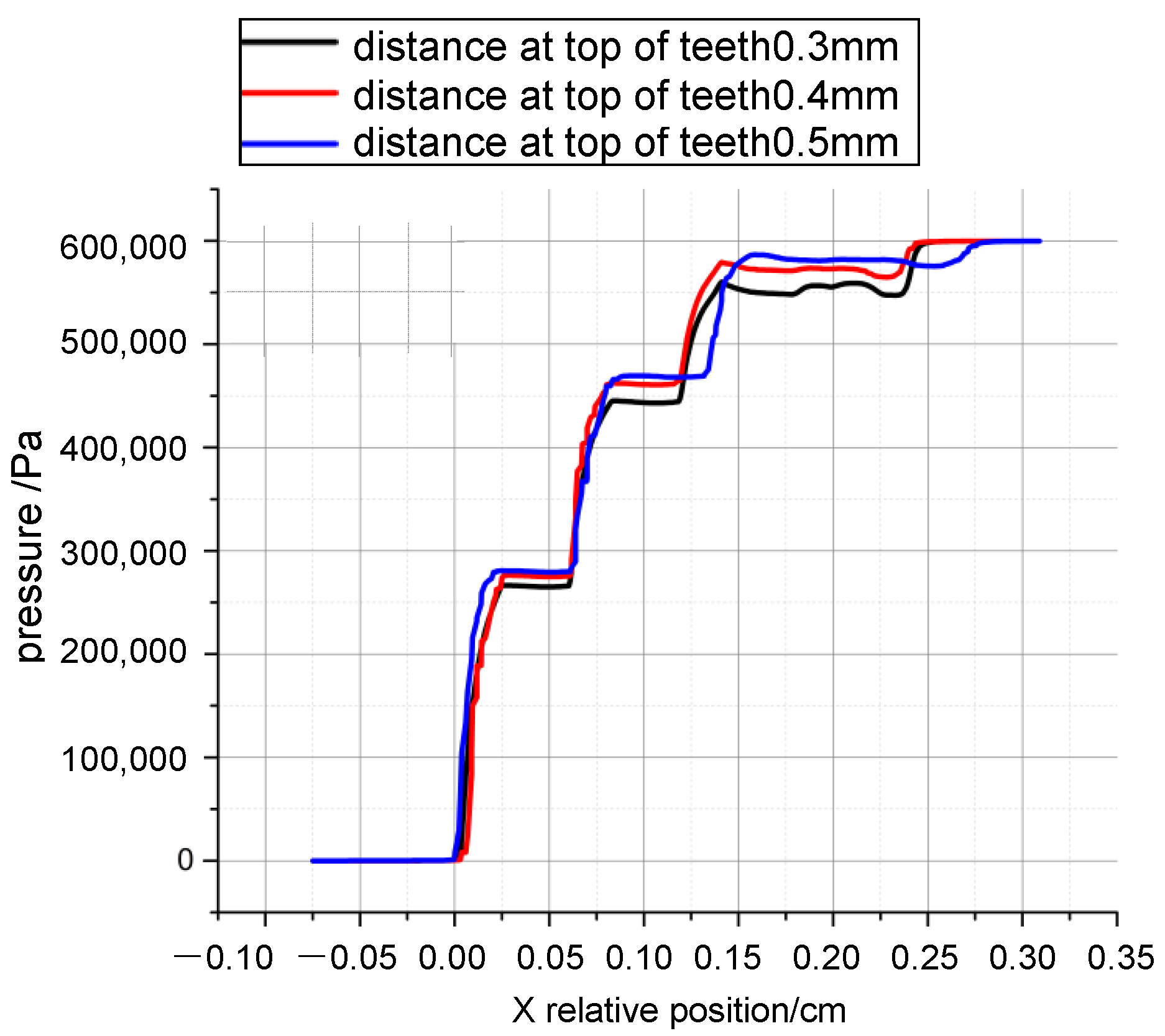
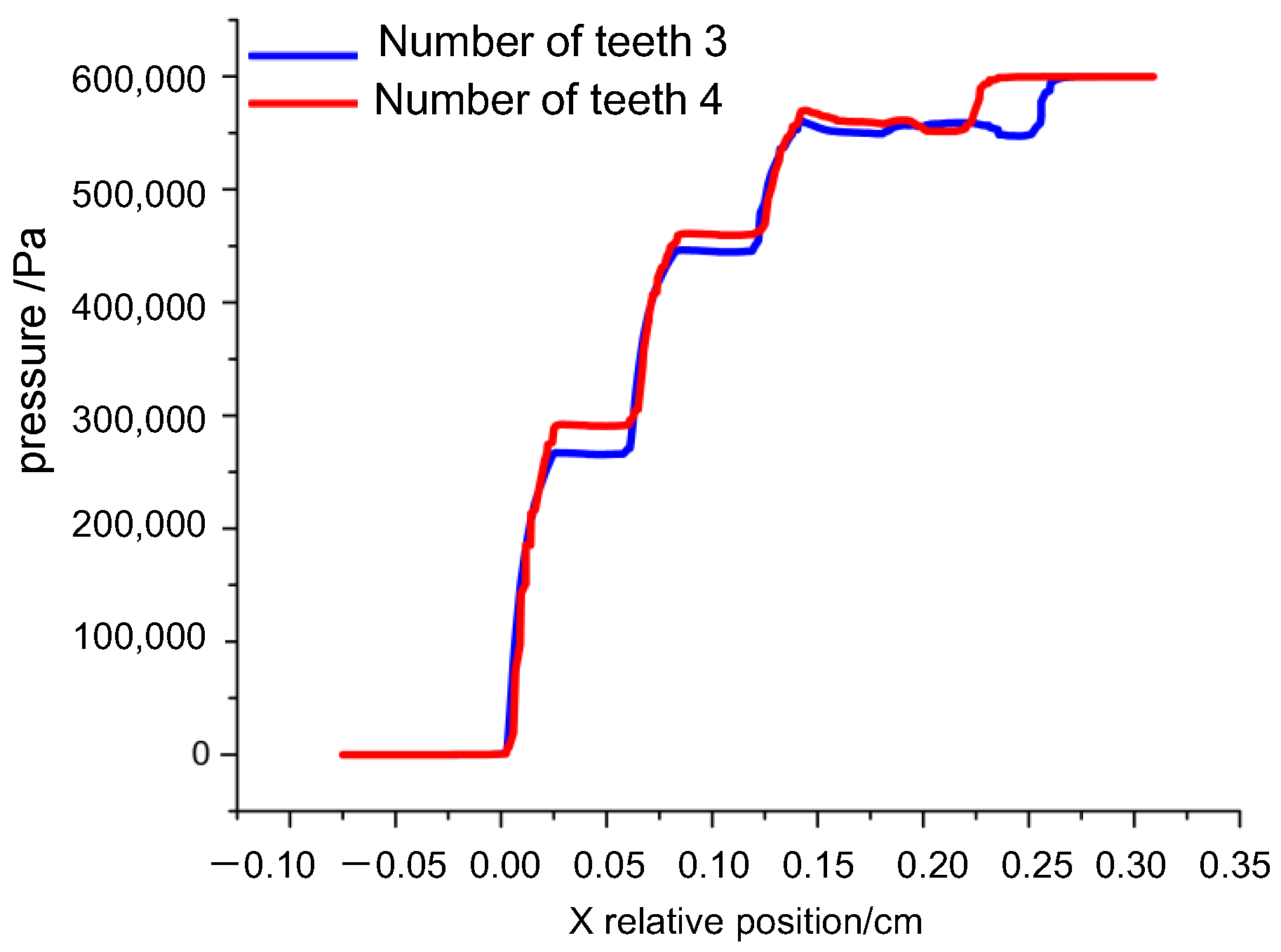
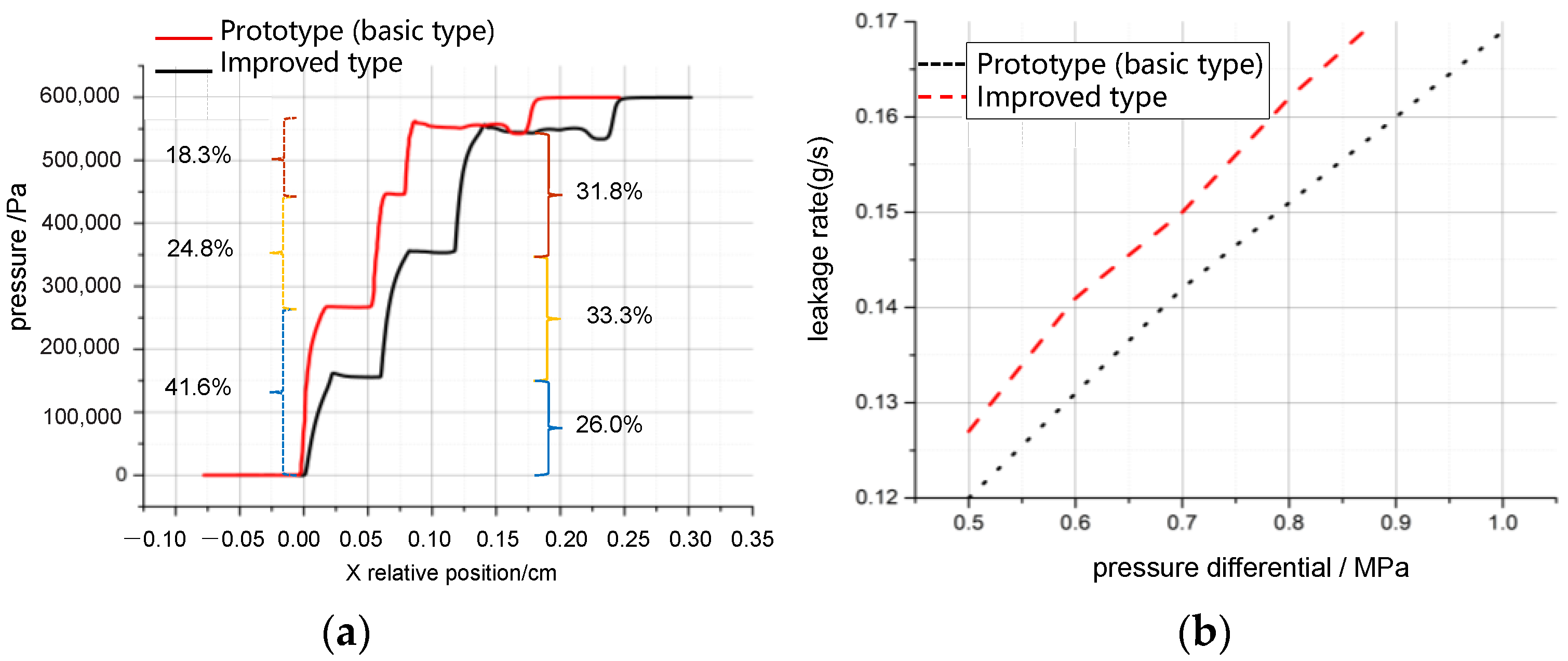
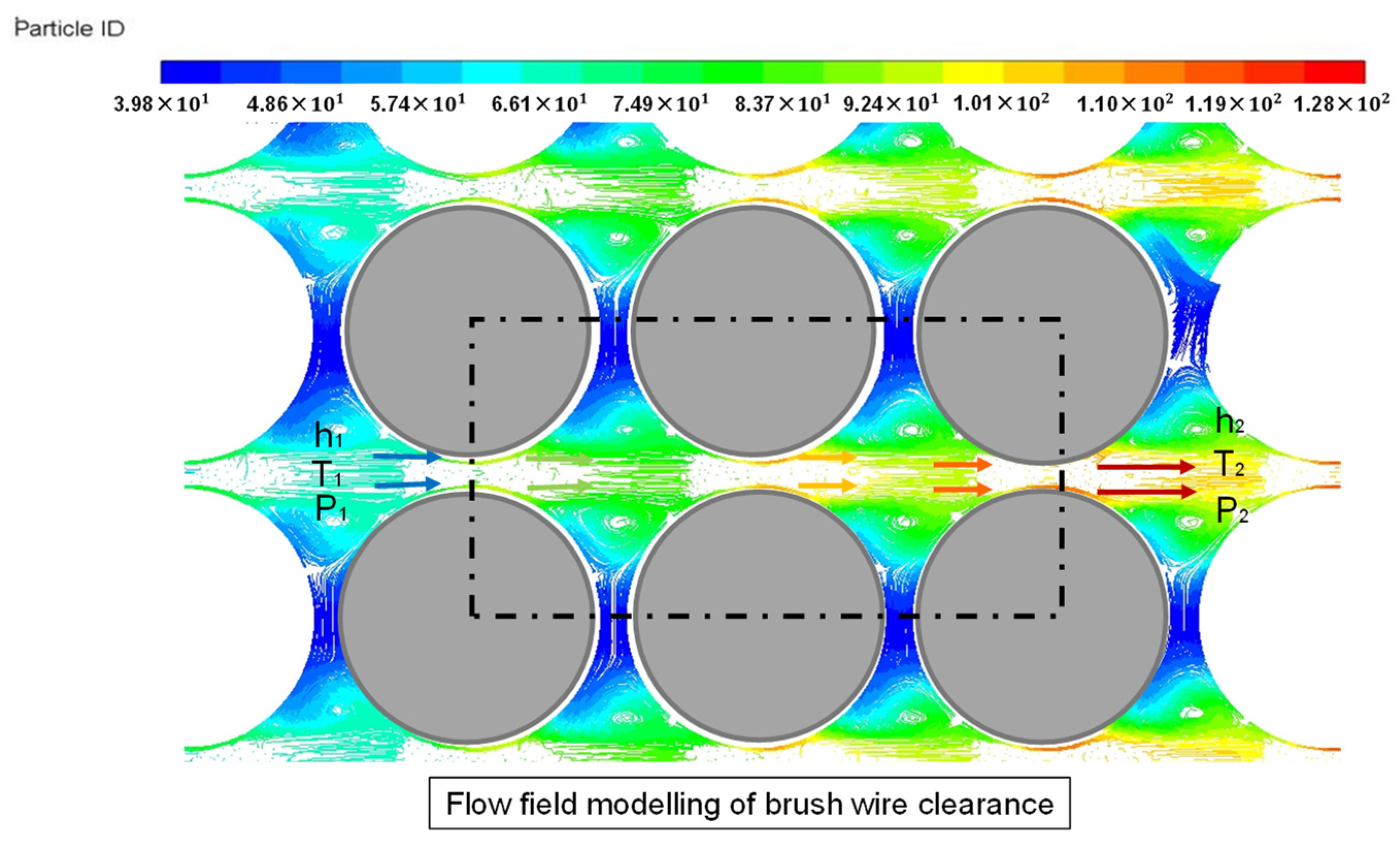
| Structural Parameters | Values/mm | Structural Parameters | Values/mm |
|---|---|---|---|
| Outside diameter | 158 | Thickness of third-stage brush bundle | 1.8/2.0/2.2/2.4 |
| Inside diameter | 138 | Height of backplane for first-stage brush bundle | 1.0/1.2 |
| Axial distance of first-stage brush bundle | 1.5/1.8/2.0 | Height of backplane for second-stage brush bundle | 1.0/1.2/1.4 |
| Axial distance of second-stage brush bundle | 1.5/1.8/2.0 | Height of backplane for third-stage brush bundle | 1.0/1.2/1.4 |
| Axial distance of third-stage brush bundle | 1.5/1.8/2.0 | number of grate teeth | 3/4 |
| Thickness of first-stage brush bundle | 2.0/2.2/2.4/2.6 | The inclination of grate teeth/° | 50/55/60 |
| Thickness of second-stage brush bundle | 2.0/2.2/2.4 | Radial clearance of grate teeth | 0.3/0.4/0.5 |
| Number of Grids/106 | Flow Values of Imports and Exports/(g/s) | Calculation Accuracy/% |
|---|---|---|
| 5.24 | 72.80064 | 89.19 |
| 5.71 | 75.00450 | 91.89 |
| 6.36 | 76.816553 | 94.11 |
| 6.83 | 78.968718 | 96.74 |
| 6.95 | 78.968718 | 96.74 |
| Structural Parameters | Prototype (Basic Type) | Improved Type |
|---|---|---|
| Outside diameter/mm | 158 | 158 |
| Inside diameter/mm | 138 | 138 |
| Axial distance of first-stage brush bundle/mm | 1.8 | 1.8 |
| Axial distance of second-stage brush bundle/mm | 1.8 | 1.8 |
| Axial distance of third-stage brush bundle/mm | 1.8 | 1.8 |
| Thickness of first-stage brush bundle/mm | 2.2 | 2.3 |
| Thickness of second-stage brush bundle/mm | 2.2 | 2.2 |
| Thickness of the third-stage brush bundle/mm | 2.2 | 2.2 |
| Height of backplane for first-stage brush bundle/mm | 1.0 | 0.6 |
| Height of backplane for second-stage brush bundle/mm | 1.0 | 0.8 |
| Height of backplane for third-stage brush bundle/mm | 1.0 | 0.9 |
| Radial clearance of the first-stage brush bundle/mm | 0.0 | 0.00 |
| Radial clearance of second-stage brush bundle/mm | 0.0 | 0.05 |
| Radial clearance of third-stage brush bundle/mm | 0.0 | 0.07 |
| Number of grate teeth | 4 | 4 |
| Inclination of grate teeth/° | 55 | 55 |
| Radial clearance of grate teeth/mm | 0.3 | 0.3 |
Disclaimer/Publisher’s Note: The statements, opinions and data contained in all publications are solely those of the individual author(s) and contributor(s) and not of MDPI and/or the editor(s). MDPI and/or the editor(s) disclaim responsibility for any injury to people or property resulting from any ideas, methods, instructions or products referred to in the content. |
© 2025 by the authors. Licensee MDPI, Basel, Switzerland. This article is an open access article distributed under the terms and conditions of the Creative Commons Attribution (CC BY) license (https://creativecommons.org/licenses/by/4.0/).
Share and Cite
Gu, C.; Ma, Y.; Zhao, W.; Sui, X.; Hu, B.; Zhao, Q. A Numerical Study of the Sealing and Interstage Pressure Drop Characteristics of a Four-Tooth Three-Stage Brush Combination Seal. Appl. Sci. 2025, 15, 3899. https://doi.org/10.3390/app15073899
Gu C, Ma Y, Zhao W, Sui X, Hu B, Zhao Q. A Numerical Study of the Sealing and Interstage Pressure Drop Characteristics of a Four-Tooth Three-Stage Brush Combination Seal. Applied Sciences. 2025; 15(7):3899. https://doi.org/10.3390/app15073899
Chicago/Turabian StyleGu, Chao, Yingqun Ma, Wei Zhao, Xiuming Sui, Bin Hu, and Qingjun Zhao. 2025. "A Numerical Study of the Sealing and Interstage Pressure Drop Characteristics of a Four-Tooth Three-Stage Brush Combination Seal" Applied Sciences 15, no. 7: 3899. https://doi.org/10.3390/app15073899
APA StyleGu, C., Ma, Y., Zhao, W., Sui, X., Hu, B., & Zhao, Q. (2025). A Numerical Study of the Sealing and Interstage Pressure Drop Characteristics of a Four-Tooth Three-Stage Brush Combination Seal. Applied Sciences, 15(7), 3899. https://doi.org/10.3390/app15073899






